MIND RELAXATION TECHNIQUES
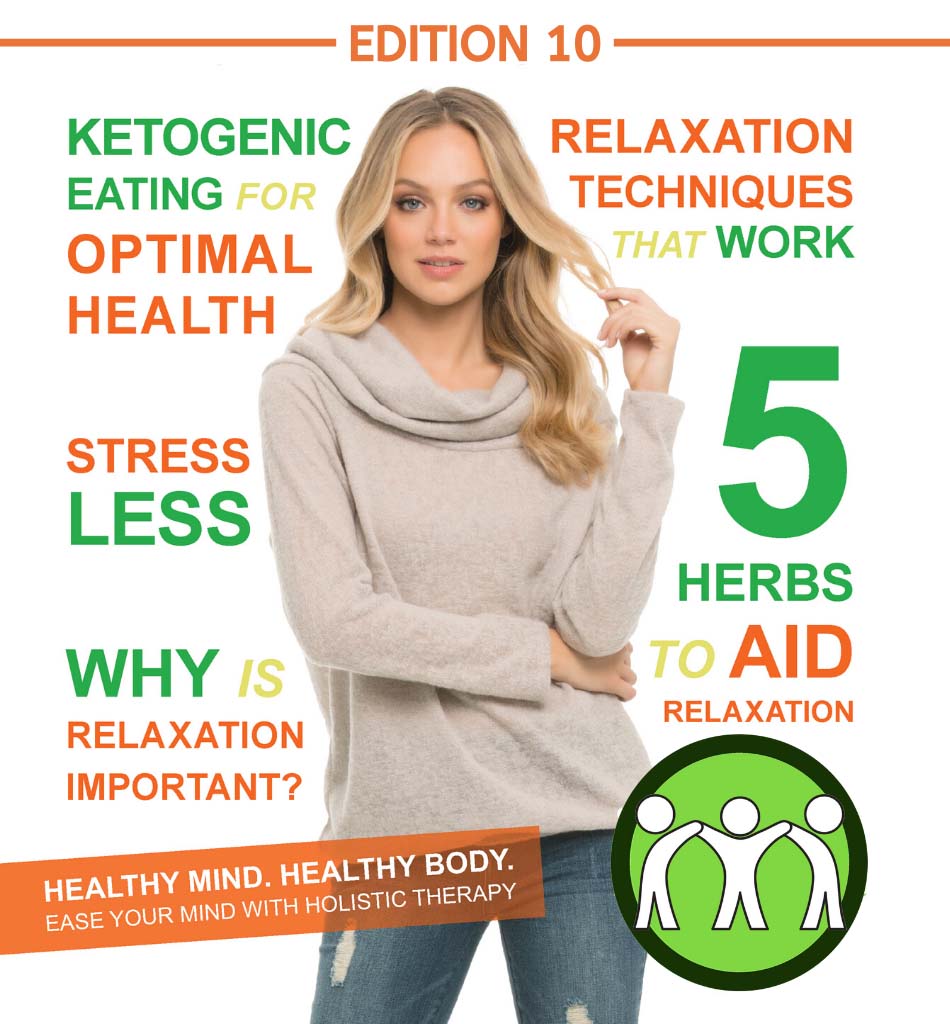
HOLISTIC LIVING |
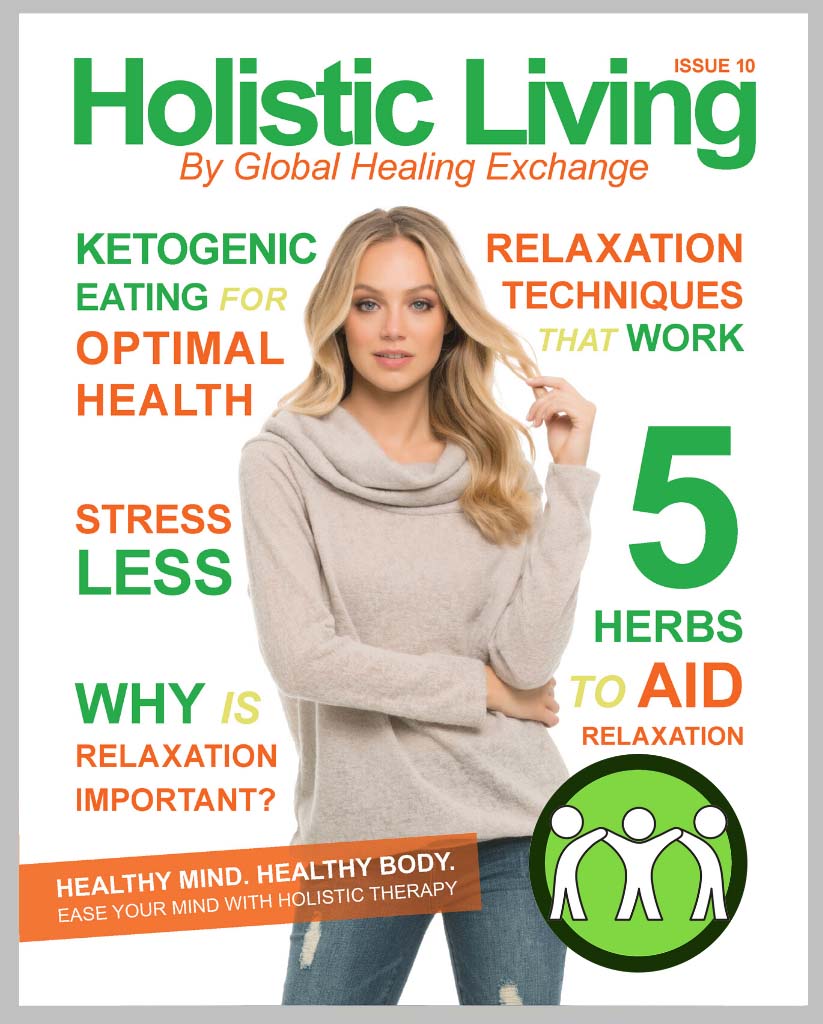 |
Editor in Chief Editor at Large Layout Artist |
If you want to advertise your business, product or service with |
Why Are Relaxation Techniques Important? by Sharon White p.4 Relaxation. Why Do We Need It? Relaxation, NLP & Hypnotherapy How To: Relax Your Way To Success Relax Baby!! Herbs For Relaxation Relaxation 1.2.3 Relax – Let’s Do It Relaxation Techniques Relaxation With Neuro Linguistic Programming The Art Of Relaxation In Mind & Body How To Relax In This Crazy World Finding USAWA On Mt Kilimanjaro |
Why Are Relaxation Techniques Important?
Holistic Living Magazine has covered big topics like cancer, diabetes, autoimmune disease, and I was wondering if relaxation was a ‘BIG’ enough topic.
I never know what the next subject will be until I am prompted by the universe and suddenly I am aware of the topic. I have been thinking about this subject a lot and realised how big it truly is.
When you look at the chronic diseases we have already covered in previous editions and you get to the root cause, stress is often an underlying condition. Many of us look for stress release in all aspects of our life. We could all do with learning some stress reduction techniques!
Emotionally we are stressed and this manifests in our physical body. What is the antidote for stress? You have guessed it, RELAXATION.
It seems simple when you express it this way. So, why do many of us have discomfort with relaxing? When we understand stress is the root cause and relaxation will help us; why don’t we just relax daily to avoid creating disease?
There are so many answers to this question and you may want to read our magazine on self-love to answer some of these. We often sabotage ourselves throughout our life. Some of us do this more than others, and in certain areas we all do this.
We have been so conditioned in today’s society to be busy. Our body has a chemical stress response. It is natural. When we are in a state of stress, adrenaline is produced by the adrenal glands.
Back in caveman times, we used it to either run after an animal for food, or flee from animals that were a danger to us. After this burst of energy we would sleep, relax and rest our body.
Unfortunately many of us can’t just simply take a nap during the day after an adrenaline rush, so our stress levels build. When we are constantly busy, we remain stressed; our stress levels continue to elevate, therefore our production of cortisol (stress hormone) levels rise.
As our cortisol rises, this affects other hormones in our body too. One of the other hormones it affects is melatonin (sleep hormone). This means we stop sleeping properly, which also puts our body into stress mode.
You can see this creates an ongoing chain reaction that can cause disease in our body if we do not break the cycle.
Relaxation helps to break this cycle. Fortunately, there are many ways to relax and help with stress reduction.
You can work with a subconscious mind therapist like myself who will help you understand your triggers; what makes you self-sabotage or unable to relax and find ways for you to start taking care of your body.
You can have bodywork done regularly, rest your muscles and produce some happy hormones to help reduce stress. You can walk in nature, practise yoga, sing, read a book, go dancing, or meditate.
All of these activities will assist you into a calm state; produce hormones that will have positive effects of your health, lowering other hormones from an elevated state.
They are all wonderful stress relief techniques that are simple and will make you feel so much better too.
Read this magazine and learn from our many experts to learn a variety of stress management and stress relief techniques. There are so many mind relaxation techniques that you can choose from.
There are relaxation techniques for pain, relaxation techniques for sleep, relaxation techniques for stress, relaxation and grounding techniques.
Relaxation benefits are so many and varied. So why don’t you explore the relaxation strategies that you enjoy and once you have found the thing for you, do it often.
Enjoy.


Founder of Global Healing Exchange and Holistic Living Magazine
Please use the information you learn in these magazine as a guide.
This content is not medical advice and is not intended to replace the advice of healthcare professionals.
Always consult your doctor or other healthcare professional before beginning or making health changes.
You should never disregard medical advice or delay in seeking it because of something you have read in this magazine.
RETURN TO FRONT PAGE
Relaxation. Why Do We Need It?
Full disclosure, I’ve just spent a week in Thailand relaxing by a pool, not checking email, or fielding phone calls and totally and utterly ignoring the myriad of meetings I should be having. I feel wonderful.
At this point I’m guessing you won’t be best impressed with the article so far… but it does bring into sharp relief as to why so many of us feel it is necessary to take a week vacation to relax!
It does seem that many of us seem like gerbils on a never ending, never stopping treadmill. We are so conditioned to be on 24/7, dealing with every little and large crisis as soon as they start brewing, that we never have time to relax in our day to day lives.
Stress release just doesn’t happen often enough, if at all!
Personally I know I’ve let myself become like this; badge of honour to have a very empty inbox and being the go to person for every question that needs answering. I also know that this doesn’t make me happy.
It doesn’t give me overwhelming enjoyment in my work; it just seems I’m going through the motions and not really helping others or myself.
So instead of being able to relax and be mindful on a day to day basis I take myself off to Thailand, as if that week off will actually solve my day to day riddle of stress and unhappiness.
It has helped, as it gave me time to reflect on the outstanding articles that are in this edition of Holistic Living Magazine. One article that has kept coming back to me is Finding USAWA on Mt Kilimanjaro by Dr. Barathan.
This article has really resonated with me; her feelings are very much my feelings. Even to the extent of reading some of the books by authors she mentions, some of which have really got me thinking.
Like why am I behaving like a Duracell bunny forever on the go, never having time for myself? Why do I invest myself in work in a forlorn attempt to give myself meaning? What is wrong with being me and that being enough?
I know that this will take time to change, adjust to a new, more self-contained reality. I know that it will take effort to not be always ‘on’ for work and the people I work with. I know that it will be a big adjustment for me.
I also know that a great place to start for me has been reading all the articles in this edition, and I’m sure you will find some stress reduction strategies and gain the same benefits.
Happy reading, and happy relaxing.

Editor-at-Large
Please use the information you learn in these magazine as a guide.
This content is not medical advice and is not intended to replace the advice of healthcare professionals.
Always consult your doctor or other healthcare professional before beginning or making health changes.
You should never disregard medical advice or delay in seeking it because of something you have read in this magazine.
RETURN TO FRONT PAGE
Nature’s First Aid |
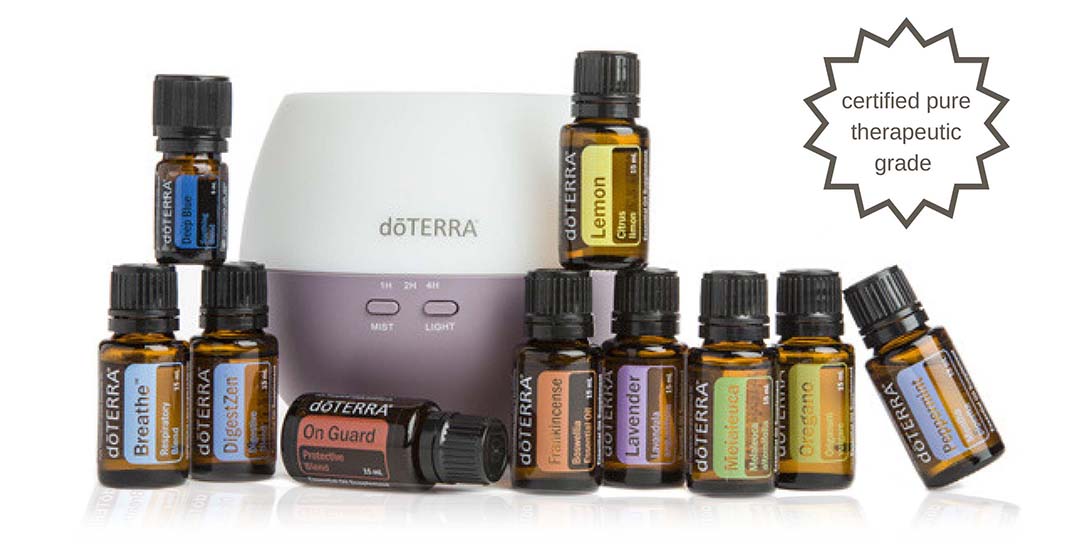 |
| ORDER YOURS HERE |
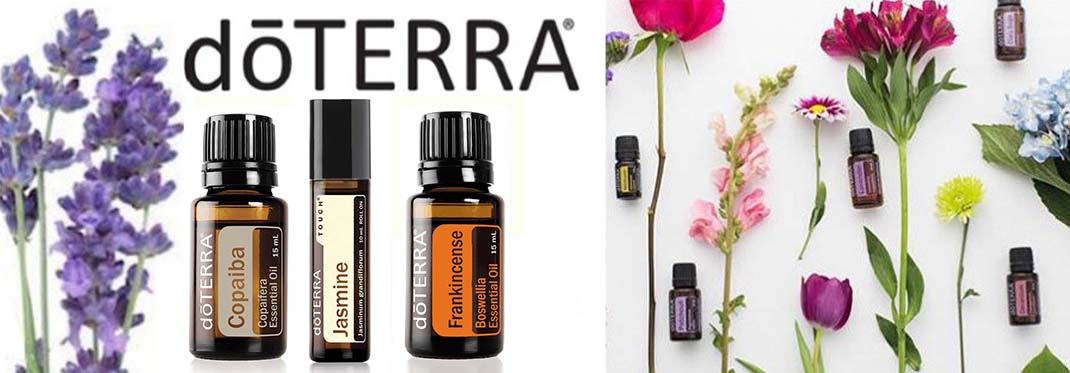 |
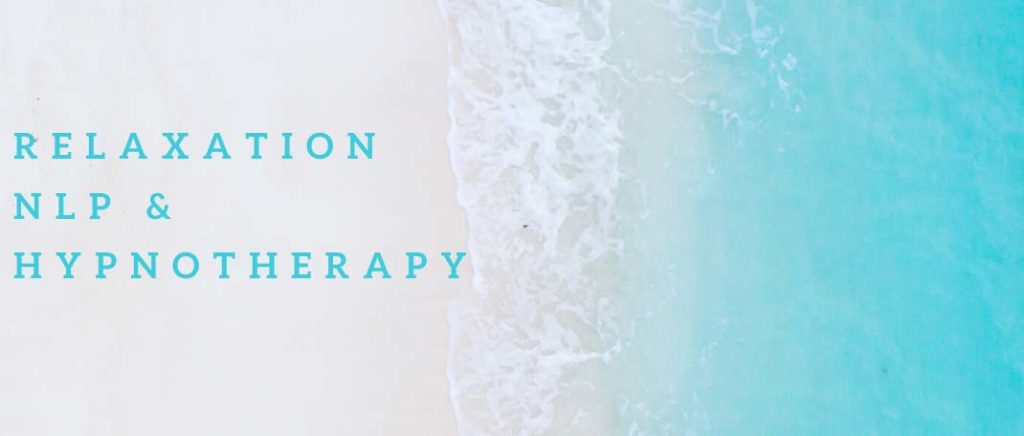
Relaxation, NLP & Hypnotherapy
What is Neuro-Linguistic Programming (NLP) and how can it help with relaxation?
Neuro – Refers to our nervous system. The nervous system is the part of us that coordinates our actions by transmitting electrical signals to and from different parts of our body. This is how our body responds to our life experiences.
Linguistic – Refers to language and how symbols, words, pictures and metaphors, affect us. When we work to change our behaviour, we use words and images to affect our nervous system in order to create change.
Programming – Through NLP we use, words, images, pictures, symbols and experiences to reprogram the subconscious mind to help us achieve the things we want in life.
In summary; we use language to reprogram the electrical automatic responses in our body to produce a different outcome.
You can see how NLP effectively helps us to change our thoughts and our behaviours. It can help us to understand why we do what we do. It can help us to make changes to the things we currently do that no longer serve us in our life.
It is extremely popular in many areas of life for many people. It is used in education, coaching, therapy, sports, performance and the corporate world. It can help anyone if they want to change. It helps to grow the neural networks in our brain.
What does that mean? Think of your subconscious mind as a record. Think about the grooves going around on that record (for the younger people reading this who have never seen a record – Google it ☺).
As we go about our daily lives, the record keeps on going round and round. Every time we do something the grooves on the record get deeper and deeper. (Our neural pathways to these behaviours get stronger and stronger).
We don’t think about most of the things we do, the subconscious mind just does them for us. The subconscious mind is the record that drives our day to day life.
But think about this. We all do things that we don’t want to do. Some may overeat, some may say negative things about themselves, some may bite their nails, pick their nose, (you get the idea).
These are behaviours that don’t serve us in life. A learnt behaviour from years ago that we are doing daily, driven by the old record. These things can be changed using NLP.
This is where I bring in hypnotherapy. We have all heard the self-hypnosis CD’s with the ‘relaxing music’ to help reprogram our behaviours, so we can live the life we want, rather than the life we don’t want.
Relaxation is a part of hypnotherapy. The brain is unable to be reprogrammed to make positive changes while in a state of stress.
So when your brain is in a relaxed state using hypnotherapy, it is easier to reprogram your subconscious thoughts and behaviours using NLP. This makes sense right?
So what does this have to do with relaxation? Well, many of us have not programmed ourselves to relax when we need to.
When you read my article opening this magazine you will see how our body reacts to the stress response and why we need to relax after the adrenaline is released, to return our body into a healing state.
Relaxation supports a state of healing. When your body is relaxed and calm, it is responsive to positive things in life coming towards you as well as being in a state where your body is able self-heal. So if you want to create a more positive, healthy life, relaxation is key.
It is important that you find some time each day to relax, as not doing so can have serious consequences on your well-being.
Just 5 or 10 minutes of relaxation per day can have a positive impact on your overall level of health, happiness & performance. Your mind and body both need time to regenerate, so give yourself that gift!
I want to give you a couple of simple ways to start reprogramming your own subconscious mind to help you to get into a relaxed state.
Ways To Help You To Relax
1. The words you tell yourself through affirmations is one key.
Relaxation is made easier with the help of these positive affirmations. They will help you to unwind, let go of stress, and naturally calm your body & mind. Make sure you are somewhere quiet and able to relax while saying these affirmations to yourself. Make sure you feel what you are saying in your body to make this process more powerful.
• I am relaxed right now • I release stress from my body • My muscles are letting go of the stress from the day (feel them letting go) • My mind is calm • My thoughts are relaxed and calm • I am at peace • Relaxing my body is easy • I am calm and balanced • I am letting go of my thoughts effortlessly and easily • I feel a deep relaxation throughout my body right now • My deep breaths mean I am getting calmer and calmer • I feel at peace right now |
2. The images you show yourself through visualisation is another key.
Relaxation is made easier with the help of this positive visualisation. It will help you to unwind, let go of stress, and naturally calm your body & mind.
Make sure you are somewhere quiet and able to relax while doing this visualisation. Make sure you feel what you are seeing in your body to make this process more powerful.
Find a comfortable position. Close your eyes and let’s take a journey inside of you right now. Take a deep breath and concentrate on your breathing, taking in a nice deep breath, holding it for a second, and letting a big breath out.
Noticed how relaxed you feel on each out breathe. Do this 10 times, focusing your attention on how much deeper your breathing becomes when you start focusing on it.
Now you are feeling more and more relaxed with every breath you take, start to notice your thoughts. You may notice that they are there with you for a while before they start drifting off out of focus.
They may come back into focus for a few seconds and then they go again, in and out with every breath you take. In and out and getting lighter and lighter with every breath.
As your thoughts drift away, allow them to leave, knowing you can pick them up again any time you like.
Leave them here for now and you can pick them back up again if you choose after your relaxation time is over and you are ready to step back into life again.
Now turn your attention to your body. Look at your feet. Feel them relaxed on the floor or on the bed, wherever they are resting right now. Feel them get heavier and heavier, more and more relaxed.
The heavier they feel, the more the tension from your day just melts away. You begin to feel lighter and lighter as the stress and tension seem to be lifting from your body, right now.
Now take your attention to your calves, feel the heaviness in them where you are resting and feel the tension melting away. As your body is feeling heavier and heavier into relaxation the tension is lifting up out of your body and floating away…..
Now take your attention to your thighs, feel the heaviness in them where you are resting and feel the tension melting away. As your body is feeling heavier and heavier into relaxation the tension is lifting up out of your body and floating away…..
Now take your attention to your hips and bum, feel the heaviness in them where you are resting and feel the tension melting away. As your body is feeling heavier and heavier into relaxation the tension is lifting up out of your body and floating away…..
Now take your attention to your back and abdomen, feel the heaviness in them where you are resting and feel the tension melting away. As your body is feeling heavier and heavier into relaxation the tension is lifting up out of your body and floating away…..
Now take your attention to your arms, feel the heaviness in them where you are resting and feel the tension melting away. As your body is feeling heavier and heavier into relaxation the tension is lifting up out of your body and floating away…..
Now take your attention to your head, feel the heaviness in it where you are resting and feel the tension melting away. As your body is feeling heavier and heavier into relaxation the tension is lifting up out of your body and floating away…..
Feel and see your body now, relaxed and heavy, heavy and relaxed. Feel the sensation of this all over your body. Feel this feeling of calm and relaxation in every cell and know you can come back to this feeling whenever you like.
Lay here in this relaxed state for as long as your body needs and just rest here…….
You can bring your breathing back into focus now. Taking deep, relaxed breaths, knowing that you can choose to take these breaths daily. Notice how relaxed your mind has become, while focusing on your breathing.
Relaxation is this simple. Practise this daily and you will be surprised how easy and second nature this becomes.
The more you practise this, the faster you grow your new neural pathways to relaxation. It will become your new way of being.
If you want come back to your thoughts, you can pick them up, or you may choose to leave them, knowing that your subconscious mind is there to take care of them for you.
Come back into the present knowing you can take this journey into relaxation whenever you like.

SHARON WHITE
Subconscious Mind Expert
Click here to work with me.
RETURN TO FRONT PAGE
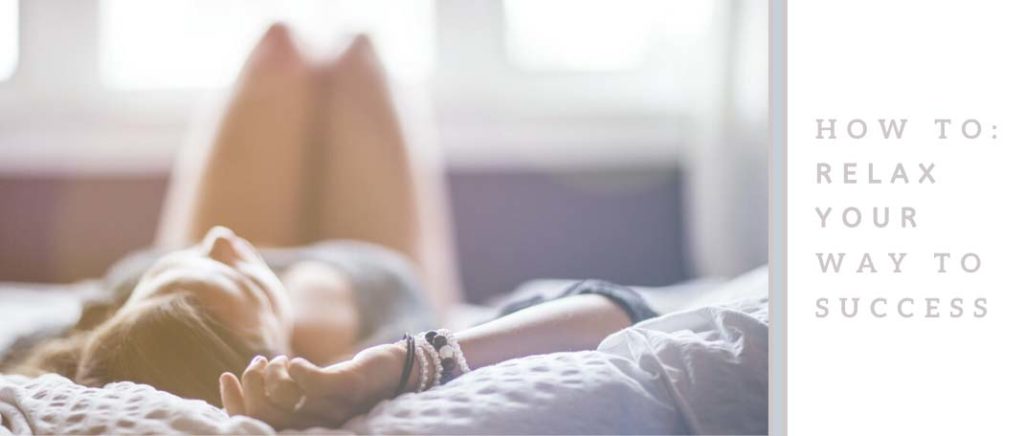
How To: Relax Your Way To Success
If you speak with “highly productive” and successful individuals (or are on your way to becoming more of one yourself), a common denominator is a high work ethic, determination and mental discipline.
Too often these days however the sacrifice by those achieving or seeking this type of success is either a compromise of personal life (zero life/work balance) or long-term taxing of the body which only becomes fully evident years down the track.
The ideal scenario to truly be “highly productive” AND well-functioning is the long-term care and preservation of the machine delivering the productivity (your body) as it needs to have equal opportunity to relax as much as it works.
It is all about balance. Understanding stress and the mechanics behind body “recovery” can help us fast track the body back to a relaxed state FAST and achieve success with more ease and for longer.
So, Is There A FAST Way To Relax?
Eating organically, exercising, good hydration and adequate sleep all play an important role in keeping the body free of extra toxins and assist in the recuperation from the demands of modern living – we all know this.
But what if I were to tell you these factors are not the complete picture?
What if your body isn’t assimilating the water and nutrition you are eating (or supplementing) and can’t sleep deeply due to hidden adrenalization?
The latest advanced research we are finding in the Kinesiology community is that stored emotional stress and trauma may be triggering off adrenal responses that block the assimilation of nutrients and water in the body; in real world terms: greatly impairing our efforts to combat stress, accomplish total health and be highly successful.
In a state of stress, a specific set of neurochemicals, hormones and bodily responses are active and an opposing set is employed when the body is in a relaxation phase of function.
So, when experiencing stress/trauma (or the perception of these), the body goes into a state of flight, fight, freeze or survival, the effects of which need to be processed and equally countered to restore the system to homeostasis (or ideal bodily “norm”).
If, however, the unprocessed emotions or traumas (aka what is initiating adrenaline release) become embedded or “stored” in the body, similar stresses can and often will perpetually re-trigger internally resulting in the body being in a constant state of survival.
In this state of being the nutritional support and other measures we are taking to stay in the game and be successful become ineffective and often void.
As we clock up our days, weeks, months and years the impact of this “build up” becomes more and more debilitating.
“Pushing through” comes at a cost and is not the ideal solution… putting ourselves into a state of pause and RELAXING daily is the key to success now and for the long-term, it IS a physiological necessity if our output is high.
A stress or trauma could be actual or perceived ranging from childbirth, accidents, injuries to burns/body scars or anything which is a threat to life or as simple as work demands, recurrent road rage or even the alarm clock blasting in your ear each morning.
What Is Happening When We Are Stressed?
From a Kinesiological perspective, a neurological cascade occurs and the resultant activation of certain muscles can create maladaptive compensations which have an adverse effect on the whole body.
Of observable interest are the muscles of the jaw and especially those surrounding the TMJ – temporomandibular joint (as structurally these muscles have been found to affect the whole system).
As the musculature surrounding the TMJs become activated (as part of an inbuilt primitive reflexes set off by a stressed state), the muscles themselves tighten which pulls the bony structure of the cranium which then applies pressure on the pituitary gland (which is housed inside the sphenoid bone within the skull).
The pressure on the pituitary gland affects the hormones which are produced by it (i.e. the adrenal, sex and thyroid hormones) and the kidneys too are heavily impacted which affects body hydration and therefor the ability to optimally detoxify/clean the blood and body and unwind to the exact degree to which it was “wound up”.
The adrenal hormones are designed as a temporary expression, a means of sustaining life and coping with “threatening” stimulus short term (these hormones trigger specific adaptive responses – whether the stress is real or imagined the neural pathways used are the same) and this response ideally should flick on and then off fully, only as a temporarily measure.
If the body continues to be affected by the same stressful stimulus or another stressor is introduced, the body will continuously pump out adrenaline and cortisol day and night causing havoc to our well-being. As we know, hydration is VITAL to the health of the body.
As mentioned, in a stressed state muscles tighten – all muscles tighten, including the muscular structure of our cardiovascular system AND those muscles surrounding/within the kidneys which impair hydration to a high degree – taxing the body even further.
In a dehydrated body, toxin elimination (including the stress hormones themselves, heavy metals and fluoride) is compromised and the ability of the body to metabolize and assimilate nutrition is also negatively impacted.
Our nutrients are the building blocks of our present and future body. Health is hard to achieve in a toxic dehydrated body.
When we are focusing on the ability of the body to “relax” ensuring the muscles are “released” or not holding tight is vital to allow the system to reset to “homeostasis” or perfect balance as both blood and lymph flow are affected by tight muscles too.
Kinesiologists specialize in muscles so we can easily help you with this.
The KEY Relaxation Mineral… MAGNESIUM
Magnesium is an important player for supporting the nervous system. From a nutritional perspective biomechanically, it works like a seesaw with the mineral Calcium inside us. When one is high the other is low, both are needed in balanced amounts.
Without Magnesium, the body is unable to assimilate Calcium, so Calcium can start to deposit around the tendons and joints (as it would in something like Arthritis) and this can give us false readings of low Calcium levels.
Inside the muscles, Calcium deposits may be implicated in the increasingly common complaint of “Fibromyalgia”. If Calcium is building up in the tissues a blood test may not show as an accurate read out of the status of the body’s true Calcium levels.
With specialized Kinesiology, we can pin point and release stored trauma and emotions (the common instigators of excessive adrenal hormone release), release the tension in the TMJ and the muscles of the body and get the hydration pathways optimized through specialized techniques.
Once corrected in this way the body can come out of a stress response and restore a natural state of functionality and from here is able to assimilate the minerals and hydrate.
Kinesiologists have super-fast methods of assessing whether the body is assimilating minerals and how to find exactly what stress based experiences or memories, are held in the system re-adrenalizing it.
We are also trained to know how to address/correct issues perfectly for the individual body through muscle testing.
After working with thousands of clients and collating data from many other Kinesiologists there is a clear indicator that a combination of trauma, TMJ dysfunction and dehydration are at the core behind some of the most prevalent and debilitating issues we are seeing commonly in society today (CFS, allergies, viruses, Arthritis, and Fibromyalgia).
Research via empirical testing using Kinesiology shows people suffering with these conditions as well as Parkinson’s and MS have dramatic changes to their muscle testing results when their Magnesium is investigated and corrected with Kinesiology and in thousands of cases symptoms have completely gone.
• Irritability and agitation • Heart disease • Cravings for chocolate – inability to stop at one piece? (This may be an unconscious self-medicating to increase your Magnesium levels) • Memory loss • Insomnia • High blood pressure • Kidney stones • Cramps, spasms, eye twitching • Osteoporosis • Poor attention span • Depression or anxiety/panic attacks • Nausea • Lethargy and fatigue • Weak muscles or dizziness • ADD/ADHD • Allergies • Arthritis • Back aches/body tension • Blood clots • Teeth grinding/sore jaw on waking • Chronic fatigue • Cold extremities • Constipation/bowel problems • Cystitis • Fibromyalgia • Headaches or migraines • Accelerated ageing • Numbness of hands and feet • Post-natal depression • Excess testosterone in women (excess facial hair and scalp hair loss) |
We Are Haemorrhaging MAGNESIUM?
When stress hormones flood our system, a directive is given to the kidneys to release Magnesium (which is the mineral of rest, digest and relaxation – none of the requirements of survival which is why the body eliminates as much as it can).
So, with stress hormones causing the automatic loss of Magnesium through our urine, we are already at a disadvantage hemorrhaging Magnesium which we need to replace to get fully back to the relaxed/balanced state to fully recover from whatever the stress was we had to endure.
The more prolonged the experience of stress the more Magnesium we lose and need to replenish to get the body back to equilibrium so it can kick into its natural state of health.
With Magnesium, continually being dumped out due to stored unprocessed emotions and traumas (and modern-day stress), the increasing presence of Calcium in the body becomes an issue as any Magnesium you do manage to take in can’t reach your tissue cells due to the left-over excess of Calcium deposits throughout the body.
It is all about balance – deal with the emotional back log, minimizing present stress and replacing the water and Magnesium that is lost. When Magnesium is low, Calcium is high.
Note: when stressed it is important to replace Magnesium, increase water and eliminate the core of the stress trigger.
The magic of Magnesium doesn’t stop at its role in relaxing the body. It is a crucial ingredient on the production of energy itself inside the cells. For every single molecule of energy the human body makes, MAGNESIUM is necessary.
So, on the path to embodying high productivity and true success in life the battle for the extra energy to have the added edge really starts and finishes with preserving and replenishing your Magnesium and reducing stress triggers from the core.
The ANSWER
If you are aiming to be ultra-successful connect with a Kinesiologist (or anyone qualified in core body/mind work) who can assist you to identify and release your emotional triggers and traumas to reduce the unnecessary excess of adrenaline released daily into your body and plug the loss of your body’s Magnesium supplies FAST.
Remember to use nature to help you along your way too. Diet choices rich in Magnesium, regular EPSOM salt baths, and even Magnesium Oil (Magnesium Chloride) are all available for you to include into your daily routine to get the most out of your body and achieve success without taxing your body.
1. Reduce stress stimulus AND add more relax time to your schedule |
2. Exercise to augment positive brain chemistry and to keep body fluids (blood and lymph) moving |
3. Diffuse stored stress build up (Kinesiology is one of the best tools I have found for this). This will plug excessive adrenaline release and minimize Magnesium loss helping each day become easier |
4. Replenish Magnesium, increase water and REST |
5. Set goals that fill your heart. Keep focussed. SUCCEED |

KYLIE BRYAN
Kinesiology Expert
Click here to find a practitioner.
RETURN TO FRONT PAGE
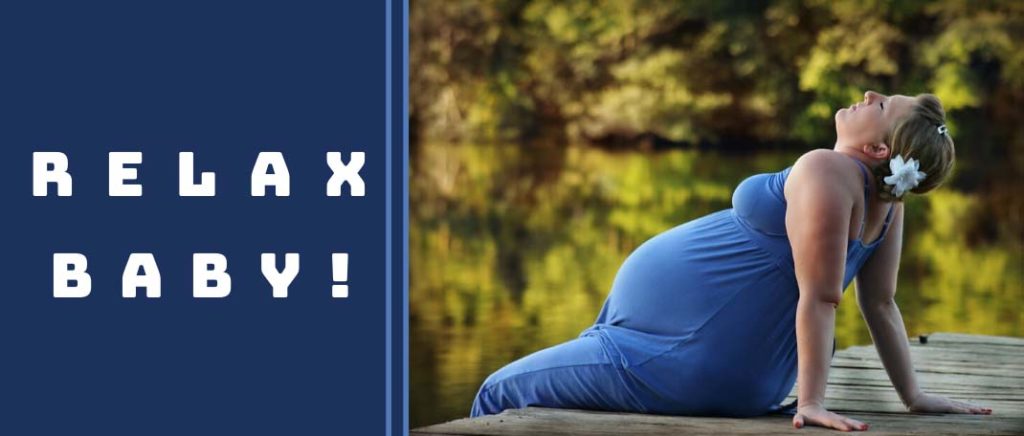
Relax Baby!!
It is now widely recognized that babies are intrinsically affected physiologically and energetically by the multi-sensory experiences provided for them in their mother’s womb.
This means that if mum is able to enjoy a predominantly calm and relaxed state of being during pregnancy, then her baby will benefit from the calming influence of such feel good hormones as endorphins, serotonin and oxytocin.
Dr Sarah Buckley writes in her book “Gentle Birth, Gentle Mothering.”
“The experiences that will begin to fire and wire your baby’s brain start in your womb, with the physical sensations that provide the earliest learning.
These include being physically supported by the womb and amniotic fluid, being kept warm by your body warmth, being gently rocked as you walk, being exposed to different tastes from your diet via the amniotic fluid, hearing your voice and voices of other family members, and feeling calm and settled when you are calm and settled.
Conversely, high levels of stress during pregnancy can fire and wire your baby’s brain for dysfunctions in learning and over-reactivity to stress”.
It is important to add that some stress during pregnancy is normal, however chronic or sustained stress causing high levels of cortisol and a predominance of the catecholamine hormones, adrenaline and noradrenaline, permeating the maternal-foetal system can negatively impact a woman’s pregnancy and have been associated with complications such as preterm birth, low birth weight, and even sleep and behavioural disorders in young children.
It is therefore so very important for mothers to learn how to relax during their pregnancy and especially to have the confidence and ability to transfer these relaxation skills into her labour and birth experience.
• Feeling more resilient and enjoying a better ability to cope with stress. • Improves your feelings of wellbeing. • Reduces anxiety. • Reduces the effects of extreme tiredness associated with pregnancy. • Soothes the body physically as less aches and pains are felt which are usually due to muscular tension. • Learning to breathe optimally using relaxation methods can assist the mother with some of the physical discomforts of pregnancy and also provides a great preparation for birthing. • The baby benefits and thrives from the hormones released during relaxation. • Specific pregnancy relaxations and visualisations can assist to strengthen pre-birth bonding and communication with the baby. • Visualisation in pregnancy can assist in developing a positive expectation and attitude towards birth. • Specific relaxations during pregnancy can identify and assist to release fears and frustrations. |
Being ultimately relaxed in labour is key to a positive birth experience. Your body is equipped to birth far more easily when the hormones of labour that are designed to support the normal physiological flow of labour release optimally and without hindrance.
This is much more likely to occur when the mother is feeling private, safe and undisturbed and can access a deeply relaxed parasympathetic state using the tools of relaxation.
Fear, stress and anxiety when present during labour can activate a woman’s sympathetic nervous system to produce a fight/ flight response and the subsequent release of the hormones of adrenaline and noradrenaline.
• Inhibiting the release of oxytocin and therefore often slowing down the first stage of labour. • Diverting blood flow to the systems of defense, thereby restricting blood flow to the uterus, which is not part of the defense system. • Limited blood flow means limited oxygen, the uterus is a set of muscles. What do muscles require in order to work properly? Oxygen. • Oxygen to the baby is limited. • Pain is created. • Labour can be prolonged. • “Failure to progress” is often called by caregivers. • Interventions are then introduced. • Emergency C-section is often the end result. |
The Benefits Of Relaxation During Labour Include;
Promotes the optimal release of oxytocin, the hormone of love and the primary hormone of labour, it regulates the frequency length and strength of your contractions and works best when the mother is feeling, calm, safe, loved unobserved and deeply relaxed.
• As labour gets stronger if the mother is deeply relaxed, her body will respond by producing ever increasing amounts of beta-endorphins her bodies natural opiates that have been proven to be up to 40 times stronger than morphine, therefore her experience of the labour sensations will be less painful. • The beta-endorphins can also alter a mother’s perception of time, what felt like 5 minutes might actually have been an hour or more, this is a wonderful tool in labour! • Allows the mother to calm and refocus between contractions, communicate with her baby and birth team and conserve her energy. • As the mother is calm and relaxed during labour the calming hormones are transferred to her baby as he or she makes their powerful transition from womb to world. • Baby receives more oxygen when the mother is breathing calmly and optimally during labour. • A relaxing space or environment that has been set up for a labouring mother not only will benefit her and her baby, but will often have a positive effective on the demeanour and approach of her caregivers, especially in highly clinical birth settings. |
So What Ways Can A Mother Learn How To Relax During Her Pregnancy?
There are a wide range of methods of relaxation available, ranging from very in depth to very simple and easy to use in every day life. It should be possible to choose one or more relaxation methods that you feel comfortable with. Some examples of types of relaxation follow.
Meditation Practice
Progressive Muscle Relaxation
Yoga Nidra or Guided Imagery
Transcendental Meditation
“The relaxation response yields many long term benefits in both health and well-being and can be bought on with very simple mental focusing or meditation techniques. People eliciting the relaxation response open a kind of door, clearing and rejuvenating their minds and bodies, readying themselves for new ideas and suggestion”
Dr Herbert Benson (Author of “Timeless Healing: the Power and Biology of Belief”).
Breathing Awareness & Practice
When you are stressed you may be taking shallow breaths and even be unconsciously holding your breath at times. Deep intentional breathing can really enhance your relaxation.
Take a slow deep breath in through the nose, breathing up from the abdomen, holding for a moment, then slowly releasing the breath preferably back out through the nose, dropping the shoulders and visualizing all tension leaving the body with every breath.
Breathing out more deliberately can assist you to release tension and gain a more relaxed position. Sometimes even doing a big sigh out can help you to truly let go too!
Hypnotherapy & Visualisation Practice
If a mother can relax and enjoy pregnancy and approach her birth from a place of confidence as opposed to anxiety then she can generally prepare and look forward to a more positive birth experience.
The relaxation tools, affirmations, visualisations and hypnotherapy processes found in The Hypnobirthing AustraliaTM program and many other gentle birthing methods are invaluable to mother’s in assisting them to develop and enjoy good relaxation skills and habits for birthing and parenting.
“Every surge is a reminder to fully relax and go deeper”.
“I feel my body floating on a warm cloud of relaxation”.
“My baby’s birth will be easy because I am so relaxed”.
Massage & Chiropractic/Osteopathic Bodywork
Prenatal massage has so many physiological and emotional benefits for you and your baby, schedule a regular treatment during your pregnancy, and ensure that your body is well supported as it adapts to support your growing body by checking in with your Chiropractor or Osteopath consistently.
Yoga & Exercise
Prenatal yoga is a wonderful way to slow the pace down in your pregnancy, relax and learn to connect with your baby through movement and also to learn some specific postures that can assist you to birth comfortably.
Although not all women find exercise enjoyable, it is a fabulous stress reliever. Taking a walk, swim or enjoying your favourite activity can provide a welcome change from the daily routine.
Taking Regular Warm Baths
With your favourite pregnancy safe essential oils. If you are pregnant during summer, float belly up in the relaxing ocean!
The development of relaxation skills is vitally important to both mother and her baby during pregnancy. If practiced regularly it is key to helping them both feel calm and prepared for birth as well as during labour to surrender and release for a positive and empowering birth!

KATIE KEMPSTER
Hypnobirthing Expert
Click here to work with me.
RETURN TO FRONT PAGE
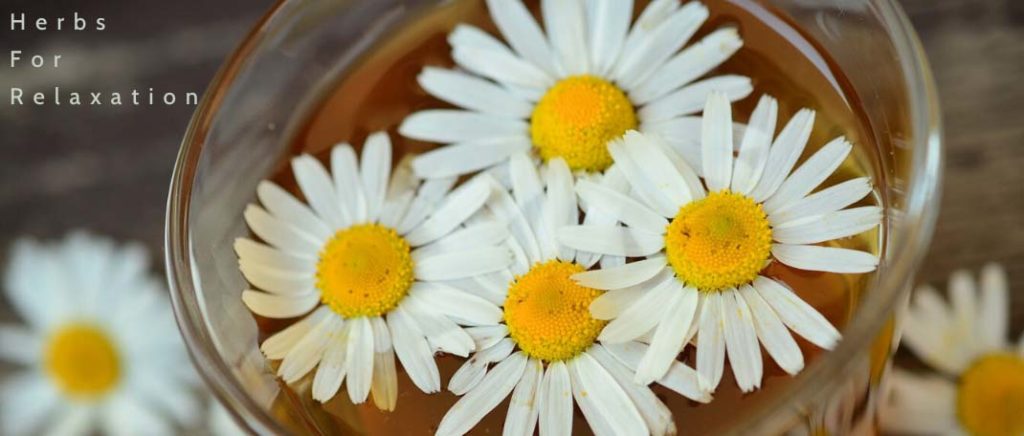
Herbs For Relaxation
here is a plethora of ways to relax and let go of tension. Mediation, walking in nature, meeting friends, reading, gentle exercise, swimming, and yoga are all time-honoured ways to relax. Relaxation can be enhanced by incorporating in herbs. There are many herbs one can choose from the vast Botanical Apothecary to relax.
Today We Are Featuring 5 Herbs For Relaxation.
1. Chamomile
Scientific name: Matricaria chamomilla also known as Matricaria recutita, German chamomile or wild chamomile, the most commonly-used species. For centuries people have used Chamomile for healing.
The dry chamomile flower is known for its anti-inflammatory, antioxidant, antifungal, antispasmodic, anti-ulcer, and astringent healing properties.
The presence of many flavonoids, sesquiterpenes, and other powerful antioxidants, which can have significant effects on the body. This herbal tea besides being delicious, is wonderful as a relaxation, stress, and anxiety tea treatment.
After a long day at work, the warm, soothing nature of this beverage can help increase the levels of serotonin and melatonin in the body, which can successfully eliminate stress and worry, while also slowing down the mind and eliminating the classic symptoms of anxiety.
1-2 cups of chamomile tea per day can do a significant help against your chronic stress symptoms.
1 heaped teaspoon dried chamomile flowers in 250 ml fresh, delicious water, brought just to the boil. Optional additions to taste, such as honey, lemon, or mint. |
Do not use the oil during pregnancy as it is a uterine stimulant. Chamomile can have a sedating effect on the body and can cause drowsiness. Do not use while driving, operating heavy/precision machinery, or performing any other activity requiring a high, acute, level of awareness. Chamomile causes contact dermatitis in some people, especially when fresh and frequently handled. Compositae in general are allergenic to some people. This includes other common herbs such as dandelion and echinacea. Long term use may result in ragweed allergy. Do not use at all if you are allergic to ragweed. Consult your healthcare practitioner if you have any concerns about using this herb. |
2. Lavender
Scientific name: Lavandula, part of the family, Lamiaceae. This is a beautiful herb for relaxation. Inhaling the evaporated essential oil of this plant can eliminate nervous tension and treat respiratory issues.
The plant has a calming effect on the brain, helpful with anxiety, depression, insomnia, and general restlessness. It’s also useful for people who have hypertension as it lowers blood pressure whilst encouraging healthy circulation.
It is known aromatic, carminative, sedative, bitter, antidepressant, hypnotic, cholagogue, anti-microbial and nervine properties.
To make lavender tea, you can either use a saucepan or a teapot. Add four cups of water and two tablespoons of lavender flowers. Let the water boil and then allow the tea too steep for at least 15 minutes. Strain and then serve. It can also be chilled to make iced Lavender tea. |
Precautions of Lavender Essential Oil – Always test for skin sensitivity prior to widespread use and use on the feet when possible. Excessive use of any oil can lead to skin sensitization. Keep out of eyes, ears, or nose. Not all oils are created equally, so test brands carefully, and never use an oil in a way not recommended by its maker. It is not advised for use in pregnant or nursing mothers. Oral use of Lavender may cause constipation, headache, and increased appetite. Lavender oil is toxic if taken orally. |
3. Lemon Balm
Scientific name: Melissa officinalis, belongs to the Lamiaceae family. A citrusy and fresh scented herb has been used for centuries to treat anxiety, sleep disorders, indigestion, and wounds. It soothes the nervous system in an effective and yet gentle way.
The essential oil enhances the feeling of relaxation. It is known as a nervine, sedative, antiviral, carminative, diaphoretic, antispasmodic and anti-depressive.
It has also been shown to enhance cognitive performance through its actions on acetylcholine receptors in the brain.
1 heaped tablespoon of dried leaves or 2 tablespoons of fresh leaves for each cup of boiling water strain add honey and, or lemon. |
The use of herbs is a time-honoured approach to strengthening the body and treating disease. Herbs, however, contain components that can trigger side effects and interact with other herbs, supplements, or medications. For these reasons, you should take herbs with care, under the supervision of a health care provider qualified in the field of botanical medicine. Pregnant and breastfeeding women should not take lemon balm. |
4. Schisandra
Scientific name: Schisandra. The Chinese name for schizandra is Wu Wei Zi, which means “five flavour fruit.” This is due to the fact that schizandra contains all of the five tastes: salty, sweet, bitter, pungent and sour. Schisandra is a wonderful herb that has been used for thousands of years in Traditional Chinese Medicine to treat a wide range of ailments. This wonderful herb reduces levels of stress hormones in the blood, regulate blood pressure. When taken long-term, schisandra can help to repair a frazzled nervous system and enhance the body’s overall performance. It is known as an Adaptogen, anti-inflammatory, antifungal, antiviral and antioxidant activity.
Simmer 1 to 2 Tablespoons of the dried berries in 2 cups of water in a small, covered saucepan for 15 to 20 minutes. |
While schisandra is relatively safe to consume for a wide range of people, it should be avoided when pregnant as it is a uterine stimulant. It may be appropriate to seek the advice of a qualified herbalist for additional assistance, when creating individualized herbal formulations for specific health conditions. Consult your healthcare practitioner, before using schisandra, if you are taking prescription medications or have a serious medical illness. |
5. Holy Basil/Tulsi
Scientific Name: Ocimum Sanctum a member of the mint family. It is also referred to as the “Queen of Herbs”, “Mother Medicine of Nature” and the “The Elixir of Life.” Holy Basil is one of the most sacred plants in India. In Hinduism, Holy Basil is worshiped as the incarnation of Lakshmi, the wife of Vishnu and one of that religion’s most important deities.
It smells strongly of cloves or cinnamon which is probably due to the high amount of eugenol, rosmarinic acid, and linalool. It is considered an excellent adaptogen, which means that it helps the body adapt to stresses, restore balance, and normalize functions.
Traditionally it has been used in Ayurvedic medicine for its antibacterial, fever-reducing, headaches, stomach disorders, inflammation, heart disease, various forms of poisoning, and respiratory health qualities.
Chronic stress has been shown to increase the levels of oxidative stress and free radicals. Holy basil enhances the levels and activities of endogenous antioxidants and antioxidant enzymes including glutathione and superoxide dismutase.
It is an adaptogen, anti-inflammatory, antiviral, antibacterial, anti-fungal, antioxidant.
Cover 2 teaspoons of fresh Holy Basil leaves with 230 ml of boiling water, then cover and let steep for about 10 minutes before straining the leaves off and drinking or 1 tablespoon of dried herb to each cup of water. Holy Basil Iced Tea use 230 ml of water and 1 tablespoon dried tea as your guide for how many cups you want to make. Place holy basil tea into a saucepan, bring to a gentle boil, then remove from the heat and steep for 10 minutes. Then strain with a fine mesh strainer into a covered glass pitcher and chill in the refrigerator. Slice a few lemons to serve with each glass or float on the top of the iced tea. |
Holy Basil can slightly thin the blood and shouldn’t be taken by people taking blood thinning medications. It may also lower the blood sugar and shouldn’t be taken by anyone with hypoglycemia. It may decrease fertility and should never be taken by women trying to conceive. Pregnant and breastfeeding women should not take Holy Basil. |
• Agrawal P, et al. (1996) ‘Randomized placebo-controlled, single blind trial of holy basil leaves in patients with noninsulin-dependent diabetes mellitus’. Int J Clin Pharmacol Ther 1996; 34(9):406-9. • Amsterdam J.D, Li Y et. al (2009), ‘A Randomized, double blind, Placebo controlled trial of oral? Matricaria Recutita (Chamomile) Extract therapy of Generalized Anxiety Disorder’. https://www.ncbi.nlm.nih.gov/pmc/articles/PMC3600416/ • Bhattacharyya D1, Sur TK, Jana U, Debnath PK. ‘Controlled programmed trial of Ocimum sanctum leaf on generalized anxiety disorders’.; Nepal Med Coll J. 2008 Sep;10(3):176-9. http://www.ncbi.nlm.nih.gov/pubmed/19253862 • Cohen M.M. (2014) ‘Tulsi – Ocimum sanctum: A herb for all reasons’ https://www.ncbi.nlm.nih.gov/pmc/articles/PMC4296439/ • Group E. (2015), ‘9 Impressive Health Benefits of Lemon Balm’. https://www.globalhealingcenter.com/natural-health/9-benefits-of-lemon-balm/ • Lavender (2017), http://www.botanical.com/botanical/mgmh/l/lavend13.html • Lavender Actions (2010) http://medicinalplants.us/lavender-actions • Lee T.H.,Jung CH and Lee D.H. (2012), Neuroprotective effects of Schisandrin B against transient focal cerebral ischemia in Sprague-Dawley rats. https://www.ncbi.nlm.nih.gov/pubmed/22960133 • Manikandan P, et al. Ocimum sanctum Linn. (2007), ‘(Holy Basil) ethanolic leaf extract protects against 7, 12-dimethylbenz(a)anthrace ne-induced genotoxicity, oxidative stress, and imbalance in xenobiotic-metabolizing enzymes’. J Med Food; 10(3):495-502. • Panossian A. Hambardzumyan et. al. (2007), ‘The Adaptogens Rhodiola and Schizandra Modify the Response to Immobilization Stress in Rabbits by Suppressing the Increase of Phosphorylated Stress-activated Protein Kinase, Nitric Oxide and Cortisol’. https://www.ncbi.nlm.nih.gov/pmc/articles/PMC3155223/ • Prasad MP and Khanum F. (2012), ‘Antifatigue Activity of Ethanolic Extract of Ocimum sanctum in Rats; MP; Research Journal of Medicinal Plant, Volume: 6. Issue: 1, Page No.: 37-46 • Noor S. and Field (2013), Lemon Balm Tea – Uplifting, Relaxing and Memory Enhancing • https://permaculturenews.org/2013/10/18/lemon-balm-tea-uplifting-relaxing-memory-enhancing/ • Panossian A., Wikman G. (2008) • Pharmacology of Schisandra chinensis Bail.: an overview of Russian research and uses in medicine. https://www.ncbi.nlm.nih.gov/pubmed/18515024 • The Chopra Center, ‘What is Holy Basil?’ http://www.chopra.com/articles/what-is-holy-basil#sm.001pykg63kfpcqx11aa2rfn9dzmc1 • UMM, (2015) ‘Lemon balm’, http://www.umm.edu/health/medical/altmed/herb/lemon-balm • UMM, (2015) ‘Lavender’ http://www.umm.edu/health/medical/altmed/herb/lavender |

IRENE VERVLIET
Naturopathic Doctor
Click here to find a practitioner.
RETURN TO FRONT PAGE
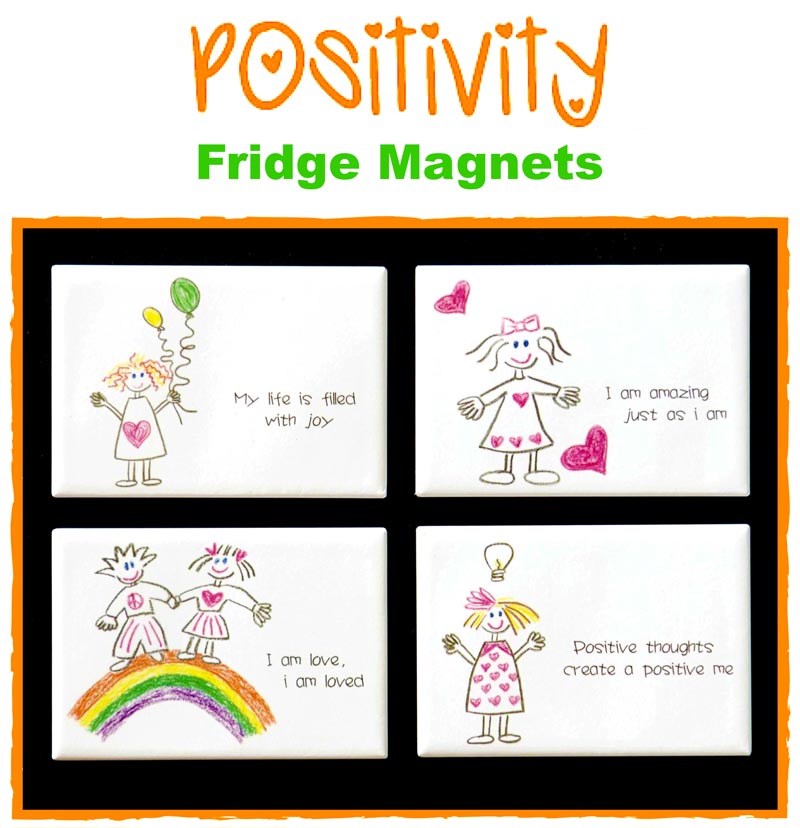 The Magnets Come In A Set Of 4 |
Positivity magnets were designed to inspire you on a daily basis to live your BEST LIFE and Every time you see them, (when you go to the fridge) they will inspire you to live a healthier life. The Magnets Will Inspire: · YOUR MIND – to think healthy thoughts – Positive thoughts create positive me We believe life is about having FUN and being as positive as possible. |
| GET IT HERE FOR AU$20 INCLUDING POSTAGE |
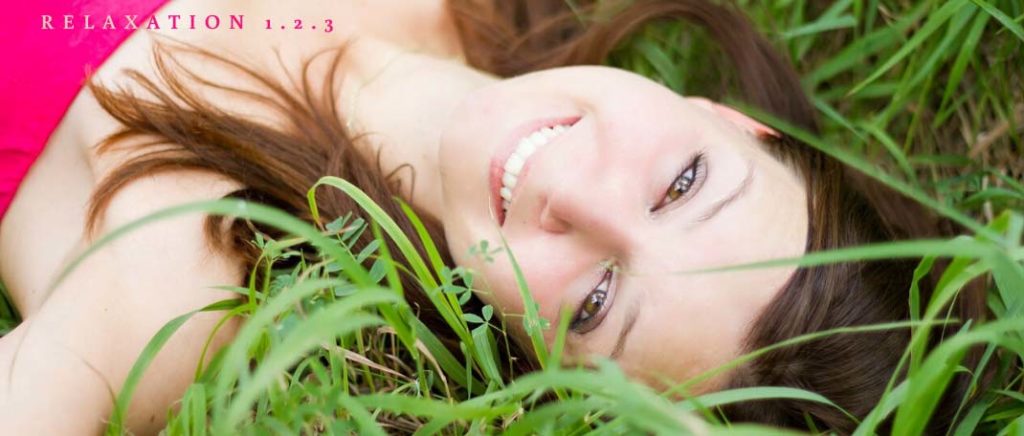
Relaxation 1.2.3
Do you feel stressed out and overwhelmed by your lifestyle, responsibilities and the overall intensity that permeates modern society? If you do, then you are not alone. A very high percentage of people in the modern world are struggling to relax.
Long-term stress creates a complexity of modern-day problems including exhaustion, burn out, depression, anxiety, fear, suppressed immune system, mind-body illnesses, insomnia, heart disease, cancer, mental illness, addictions and it also fuels relationship crisis at home and at work.
Since stress creates incoherence in brain waves, cardiac output and within the bio-electric energy system that surrounds the body, we are now certain that these three factors push the nervous system towards fight or flight.
Fight or flight means that we spend too much time in the sympathetic nervous system which says to the brain that we are in crisis.
The brain then releases adrenaline into our bloodstream to help us cope with crisis. Over time, too much adrenaline suppresses the immune system.
Your suppressed immune system can cause a number of health issues and suppressed moods. This of course is the opposite of what you want and what society needs.
Also if you have a tendency to be reactive or the opposite which is passive aggressive – then stress, incoherence and too much time in the sympathetic nervous system will exasperate these issues.
This can create dynamics in your personality that are very unhealthy and even destructive.
Relaxation Process – Scientific Steps
Telling yourself to relax is like telling a person who is upset to calm down. You simply cannot make yourself relax or calm down just by wishing it is so. It must be an organic process that is generated from the inside out.
Before we get into specific actions you can take to create more relaxation in your life, please consider that the mind and body are connected through neuropeptides.
Neuropeptides are small protein like molecules used by neurons to communicate with each other to influence the activity of the brain and body in specific ways.
Essentially what this means is that the mind and body are connected and stress will eventually have a deleterious effect on both mind and body.
To be even more specific the late neuroscientist Candace Pert stated “eventually the mind becomes the body.”
What she meant is every thought has its own energy system that is being held in the body in molecules of emotion.
Therefore it is accurate to say that your body is your subconscious mind and generates thoughts and feelings that are positive or negative based on programming from your body-mind and brain.
This especially happens in the first seven years of life when your personality develops its own foundations in the way you view the world.
Accordingly, if one or both of your parents were very stressed, exhausted or anxious when you were a child this pattern may be programmed into your subconscious body-mind.
In other words it is learned behavior that you generate from the past conditioning into the present time.
In the next section you will learn basic steps to overcome the programing and conditioning in order to relax and overcome stress that stimulates these uncomfortable patterns from the past.
Relaxation Process – Practical Steps
The first consideration for relaxation is rest. If you lack adequate downtime on a daily basis you will definitely become stressed and tired. In order to build a very strong energy field and vibration you need to do nothing.
Do not stand when you can sit and do not sit when you can lie down and get in a very relaxed horizontal position. If necessary, you can even make important phone calls while lying down or get in the habit of throwing a roast into the oven and give yourself an hour of rest.
Meditation is also an important aspect of relaxation. Twice a day for 20 minutes is very effective over time.
It permits the parasympathetic nervous system to take hold of your brain waves into alpha or even theta, a coherent cardiac output and a coherent overall energy system.
If you can obtain guided meditations with binaural beats that you listen to on a regular basis, it will shift your relationship with yourself, your thought processes and your relationships with others to a much more relaxed state.
I strongly suggest you obtain a supply of organic magnesium oil and magnesium flakes or Epson salt. Place the oil in a smaller spray container.
Put 10 sprays into a glass of pure water as often as possible and also spray on your entire body once or twice a day. Do not spray on face and neck.
Place the magnesium flakes or Epson salt in the warm bath on a regular basis but especially when you feel really stressed.
Do not make the bath water too hot because absorption of the flakes will make you feel very relaxed. If the water is too hot you may feel dizzy when you stand up so just use common sense.
Coherence 1.2.3 is a process using EFT/ Tapping, Psych K and nine positions trauma release to synergistically bring relaxation and coherence to your brain waves, cardiac output and your entire human energy field.
Global Healing Exchange and Holistic Living Magazine can provide access to this powerful training.
Sprinting three times a week is a powerful way to strengthen heart and lungs. These are the two most important organs for long term health.
If you build up to 3 x thirty second sprints at full speed after a warm-up you will have a very balanced relationship between your body-mind and your central nervous system. This will greatly support relaxation.
Earthing is a simple process of healing your body-mind and spirit from the earth’s electromagnetic energy absorbed through the bottom of your feet. This can be laying down, sitting or walking with your bare feet on the grass or sand at the beach.
The energy will strengthen the ATP held in every cell in the body which heals and detoxes your entire body. The more you do Earthing – the healthier you will be.
After you build the practical steps into your routine and begin to feel much better you can begin taking steps for a deeper spiritual connection.
Relaxation Process – Spiritual Steps
By now you have come to understand that your body-mind is connected and represents your past. You might say the body is the laboratory of life because it holds clues about your entire history including what happened in the womb.
By healing the body-mind and stress related illnesses, you can leave that energy and consciousness in the past where it belongs and focus on your spirit and vibration as it exists in present time.
Once you become more relaxed and leave your body-mind dramas behind you, you can set an intention for your spirit to run the show and live fully in the present moment. The higher your vibration the stronger your spirit will identify with your highest self-esteem.
The opposite is also true. The lower your vibration, the weaker your spirit feels. You then feel stressed and the body-mind dynamics of the past seem to reignite out of nowhere.
In order to possess a truly integrated and solid spiritual path the development of the heart and soul connection is essential. The stronger the connection between heart and soul, the more you’ll be able to observe yourself and live beyond time.
Detached timelessness is the ultimate outcome of your spiritual journey as a human being here on earth. To live beyond time is to prioritize the heart and soul. It solidifies your connection with yourself, with Spirit and humanity. It often helps to have a teacher, therapist or God to support you on this journey.
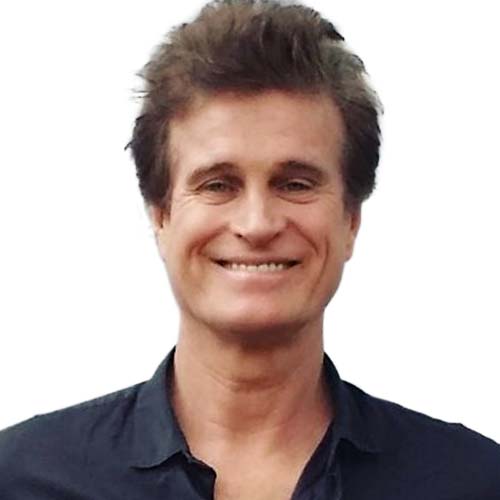
ROBERT KIRBY
Mind/Body Transformation & Integration Expert
Click here to work with me.
RETURN TO FRONT PAGE
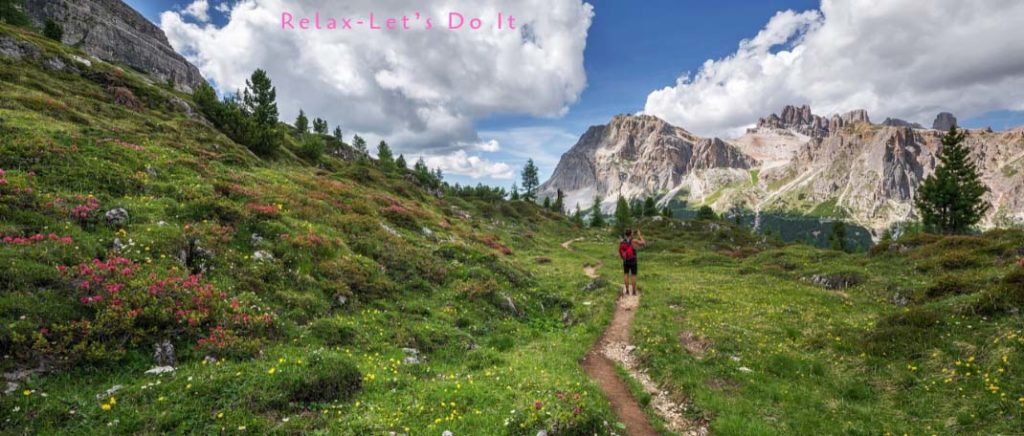
Relax – Let’s Do It
How do you activate your soul by finding ways for peace and relaxation? How do you find your Shangri La? We live in a world of constant motion of thoughts, actions, making decisions, explaining our behaviours, our choices and our very existence.
Home life, work life, finding the balance that keeps us on the right side of sanity, (or insanity?) What each person does to find ways to relax is only conducive to that individual.
I’ve always had an image in my head of a place far away atop the highest point of a mountain, its cliffs defy another space and time, and to get there is almost only done by some form of teleportation.
The surrounding area displays colours reminiscent of a Monet painting, it’s a place that conjures up in my mind a feeling of solitude, almost monk like retreat, and to me its peace, and total relaxation.
That’s where my mind can take me, ever so briefly for a quick moment of time, but here in this physical realm where we exist, we look for ways of finding relaxation in many ways so we can manage and cope with the stresses and anxiety that can be a controlling aspect of our lives.
Are You A ‘Chill-Axed’ Kind Of Person?
The opportunity of being able to write an article is that you can share your (my experiences) with people because it can relate to others in a way that says how connected we really are.
So, this article is coming from a totally different perspective in talking about how important it is to understand the benefits and soul purpose. It is about our body, mind and spirit to encompass the joy and nurturing of relaxation.
If I was to characterise myself, I would say I’m a fairly laid back, go with the flow kind of person.
For me I don’t feel I hold stress or anger in my body very long at all. I would say some of my emotions can be instant (anger, frustration, annoyance) but I can quickly move out of whatever negative emotion I’m feeling.
Maybe the older and wiser I become, the easier I can accept things and do not place enormous stress on the little stuff, which is the proverbial “mountain out of a molehill” syndrome, instead it’s just a small pebble in the galactic pathway of my life!
I know as a young teenager, a heavy personal trauma made me realise never to take things for granted.
Since I really started to learn and experience more about energy healing and my intuitive awakening with my inner spiritual growth, I’ve become much more mindful of life and situations by looking inward, seeing and feeling deeper connectedness and allowing this personal development to shape and strengthen my soul purpose.
I like to observe what it is, and let it flow through me. Letting go of trivial and unnecessary thoughts and emotions rather than the superficial shallow aspects that many of us try to make out is so important.
This really helps reset my mind, whatever I may have been engaging in, it helps to calm and gently relax me.
Helping Others To Find A Way To Relax
This last week I experienced a rather higher than normal frequency of greater awareness of anxiousness, concerns that seemed to elevate stressful thoughts because a member of my family (my sister) experienced a scare with her health all in a matter of “good one day not so good the next”.
After detecting two aneurysms on either side of her front part of the head, and having local tests which were important to get done, a decision was made to make a fast visit to a Sydney hospital (5 hours away).
Key contacts were made, some amazing assistance to medical technology and Doctors, that did tests left right and centre to find out the results of the haemorrhage that occurred in her right eye a week ago, and the piercing headaches that plagued her for nearly 10 days.
Now during this sequence of events, she was calm and relaxed, though her blood pressure started to increase (I’m sure a common reaction under the circumstances).
With several tests done they recommended a lumber puncture that would detect if there had been a bleed in her brain. She became slightly overwhelmed and a feeling of terror and unfamiliar emotions emerged.
She was scared, didn’t like the prospect of having something inserted into her back, she wanted reassurance it wouldn’t hurt, then she changed her mind and didn’t want to have it done at all.
As much as it might be uncomfortable, the nurse would give her something to relax, and she would not even realise it was being done.
I stood outside of the curtained emergency room and I applied a healing technique over her, asked for assistance spiritually, using breathe and higher frequency thoughts to guide me, as they commenced the procedure.
Within minutes a calming peace came over her, as she lay having this scary (in her mind) lumbar puncture.
I wanted to highlight this experience because moment from moment your emotional being must cope with the surge of fluctuating energies.
A monitor connected to her was the visual graph so I could see what was happening, blood pressure rising, heart rate increasing etc, whilst she lay there thinking worst case scenarios, and I offered words of encouragement and trying to help her stay calm and relaxed.
What Is Relaxation?
Factors That Play A Part
This is a state where you can feel calm, and able to manage your stress or anxiety. Someone’s methods of relaxing may be totally different to the next persons.
(Unfortunately a pina colada under a palm tree maybe someone’s heaven but it isn’t always the answer, darn, I kinda liked that thought!)
Somethings Gotta Give
When a person uses relaxation techniques there are many ways it can assist your body to cope with mental health issues such as depression, anxiety and stress. A lot of other related health benefits can benefit using relaxation.
• The relief of chronic pain • Reducing blood pressure, heart rate and normalising breath rate • Improving confidence • Reducing tiredness • Helping control anger and frustration issues |
What Are Some Relaxation Techniques?
• Visualisation, where you create a mental image of a calming place for you • Deep breathing, where you refocus your attention on your breathing • Hypnosis • Meditation • Mindfulness • Exercise • Aromatherapy oils |
Some relaxation techniques focus on muscle relaxation or breathing. An example is progressive muscle relaxation, where you tense then relax different muscle groups.
A Relaxing Experience With A Forensic Healing Session
Can we always remain in a state of bliss? There are many ways today that we have available to help us live a life of peace, calmness, and relaxation. Finding what suits you to feel alive, connected, helping to manage stress levels, is there at our finger tips.
You only have to want to step out of your comfort zone or boundaries you may have put around yourself, and ask what can I do if I’m not feeling at peace or relaxed?
A Forensic Healing session can be done in person (in my healing room) or even via Skype or phone. Energy is energy, it’s all around us and powerful, no matter the location, or distance. Setting a clear intention will help you have a truly effective healing experience.
When I started my healing journey using Forensic Healing, I gained such clarity in understanding myself. Letting go of deeply embedded fears (these can still arise but I can handle them easier and without the self-deprecating conversations I once had).
I trust my inner (higher) self with greater conviction now, being an energetic channel is helping me to communicate, encourage, and be of service in a holistic way to help others find their Shangri La, their inner peace, and a positive form of relaxation.
Forensic Healing is a proven therapy system superior to all healing modalities, because it:
• Profiles the client, identifying negative life patterns, archetypes, emotions, belief systems, and much more
• Clears curses, negative energies, rituals, and many other spiritual issues
• Activates spontaneous healing forces in the body for immediate changes
• Removes the negative conditioning stored in the DNA or cell memory
• Uses healing secrets from ancient healing scripts combined with the most-advanced scientific methods
• Utilizes healing pathways that use physical, emotional, energetic or spiritual elements
• Heals deeply at a soul level by targeting soul facets, fragments, DNA etc
• Places a blessing on the client at the end of a healing
• Educates and empowers the client to understand themselves so they leave with new information to progress in their life
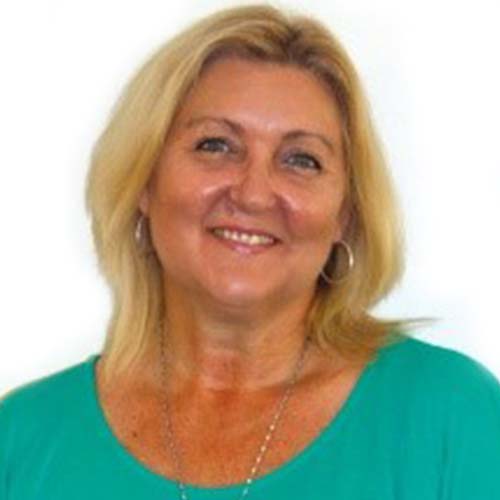
Forensic Healer
Click here to work with me.
RETURN TO FRONT PAGE
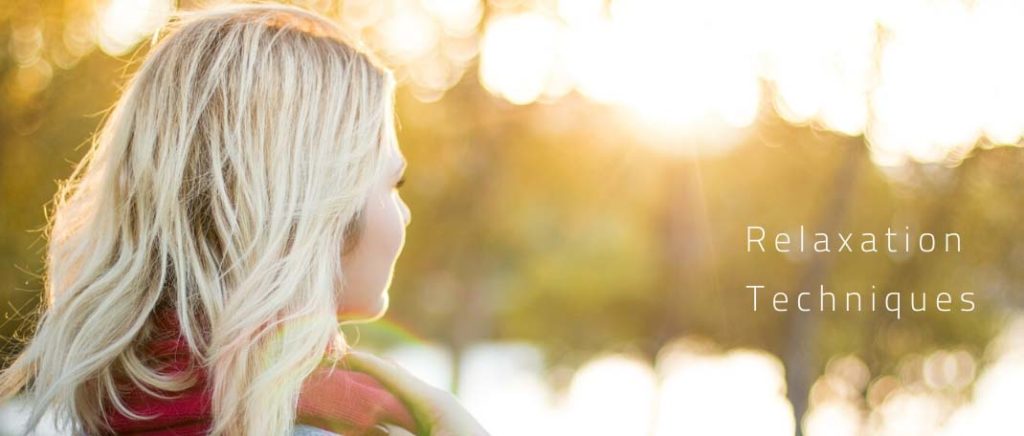
Relaxation Techniques
Apart from natural enjoyment why is it so important to relax? Well we don’t just relax because it’s fun, although fun is very important to balance life, but also there is a really strong connection between relaxation and our mental, physical, emotional and spiritual health.
It’s well known today that every emotion has a corresponding chemical reaction happening in the brain. The hypothalamus located in the brain releases certain complex amino acids called neuropeptides.
Every time there is fear, anxiety, hurt or distress these neuropeptides are released into the bloodstream by the pituitary and thereafter they swim along with the blood and reach various organs of the body.
Each organ is made up of innumerable cells and all cells have tiny antenna called Cell Receptors. So the neuropeptides get locked into these cell receptors and can cause physical illness.
When we relax we manifest a healing health condition. The human body has a miraculous ability to heal itself. Whenever your mind, body and consciousness are aligned with each other.
Whenever the various personalities within the mind are functioning in synchronicity with each other there is an internal peace and the various cells in the body are in a better relationship with each other.
In this the body will heal faster and we will be less prone to negative emotions, less likely to be physically ill and thus feel alive and well.
So, in understanding how important it is to relax, some questions to ask are; what are the things that stop us from relaxing? What are the best ways to relax and really what is relaxation?
Well I think relaxation is a refreshment of body and mind, it’s like everything loosens and there is a reduction in the strictness and severity we apply to our lives.
It’s almost as if we just let go completely, surrender to what life is offering and consciously decide to take care of ourselves, despite what our minds might be saying. Easier said than done? Perhaps, but again I think this is dependent on attitude.
For example: think of something that you would just say yes to doing without a shadow of a doubt. Something that if you were confronted with, there would be no consideration of yes or no, you would just take action without thought. We all have something like that.
Perhaps it’s running to the rescue of a loved one or a child in need, perhaps it’s doing that little extra to get the deal done. Whatever it is for you ask yourself what is it that motivates that response?
Because whatever the motivation this is a great clue in how to set aside time for yourself to relax.
Relaxing needs to become an integral part of life if you want to be happy, healthy and free…
I think indirectly relaxation is connected to self-worth and self-love. When we love and respect ourselves it’s much easier to take care and set aside time for reflection, rejuvenation and relaxation.
It’s important to know that you are worthy and the way to realise this and truly live it, is to move from your head to your heart.
In moving from the head to the heart you will also automatically slow your heart rate down and notice that there is a gentle quiet inside that is always here. The mind will continue its busy activity of trying to distract you but that’s only because it feels threatened.
It’s good to understand the wisdom of the heart. The heart is 5000 times more powerful that the head. You know that gut feeling you have at times, that knowing, well follow that because truly it will guide you much more successfully than anything else.
I’m not saying thinking is not good, there are times when it’s really important to use the mind, when we are planning & in every day functioning, but when we give in to the psychological aspect of the mind you can be sure trouble will arise.
Trouble that can include stress, tension, anxiety and other negative states. So bringing your attention to your heart centre by taking some time out is very important and there are so many ways to do that.
Clients of mine often ask me for ideas of what they can do to relax and how to include relaxation techniques in their daily schedule.
What I have found over many years of working with others to support their well-being and happiness is that the best techniques and the ones that people are likely to stick to are ones that give them not only results but that they enjoy.
Whilst meditation is one such technique that works for many, there are so many things you can include in your daily life that will support peace of mind and relaxation.
The common suggestions will probably include things like yoga, stretching, walking in nature and getting a good nights sleep, I think it’s a good idea to find your own individual way.
One of my clients relaxes by watching TV each day, another by reading stories to her kids at bedtime and another by having a glass of wine at the end of the day. We are all so individual. Rather than do it right let’s do it easy.
What is it that you could do in your life that would make you smile, be present, open your heart to yourself and others? What would help you to stop the psychological noise that keeps you separate from your natural relaxed state?
You see relaxation is part of your natural state so it may take a little reflecting, discovering what works but when you have lovingly and easily connected with your way you will find it much easier to include in your daily and weekly routine.
Relaxation techniques are a great way to help with stress management. Relaxation isn’t only about peace of mind or enjoying a hobby. Relaxation is a process that decreases the effects of stress on your mind and body.
Relaxation techniques can help you cope with everyday stress and various health problems, such as heart disease and pain. Whether your stress is spiralling out of control or you’ve already got it tamed, you can benefit from relaxation techniques.
• Slowing heart rate • Lowering blood pressure • Improving digestion • Slowing breathing rate • Balancing blood sugar levels • Reducing stress hormone activity • Increasing blood flow to major muscles • Reducing tension and chronic pain • Increasing a sense of happiness and freedom • Overall general well being • Improving concentration and mood • Improving sleep quality • Lowering fatigue • Reducing anger and frustration • Boosting confidence to handle problems |
Autogenic Relaxation. Autogenic means something that comes from within you. In this technique, you use both visual imagery and body awareness to reduce stress. You repeat words or suggestions in your mind that may help you relax and reduce muscle tension. For example, you may imagine a peaceful setting and then focus on controlled, relaxing breathing, slowing your heart rate, or feeling different physical sensations, such as relaxing each arm or leg, one by one. |
Progressive Muscle Relaxation. In this relaxation technique, you focus on slowly tensing and then relaxing each muscle group. You can become more aware of physical sensations. One method is to start by tensing and relaxing the muscles in your toes and progressively working your way up to your neck and head. You can also start with your head and neck and work down to your toes. Tense your muscles for about five seconds and then relax for 30 seconds, and repeat. |
Visualization. In this technique, you can form mental images to take a visual journey to a peaceful, calming place to relax using visualization, try to incorporate as many senses as you can, including smell, sight, sound and touch. If you imagine relaxing at the ocean, for instance, imagine the smell of salt water, the sound of crashing waves and the warmth of the sun on your body. You may want to close your eyes, sit in a quiet spot, loosen any tight clothing, and concentrate on your breathing. Aim to focus on the present and really experience your visualisation. It’s a bit like day dreaming with feeling. |
• Deep breathing • Massage • Meditation • Tai chi • Yoga • Music or art therapy • Aromatherapy • Guided Meditation |
I wish you well in your relaxation journey and please remember happiness is a journey not a destination. Human life is precious so let’s enjoy it to the max.

PAVITAR DEBRA TURNER
Meditation Instructor & Transformation Specialist
Click here to work with me.
RETURN TO FRONT PAGE
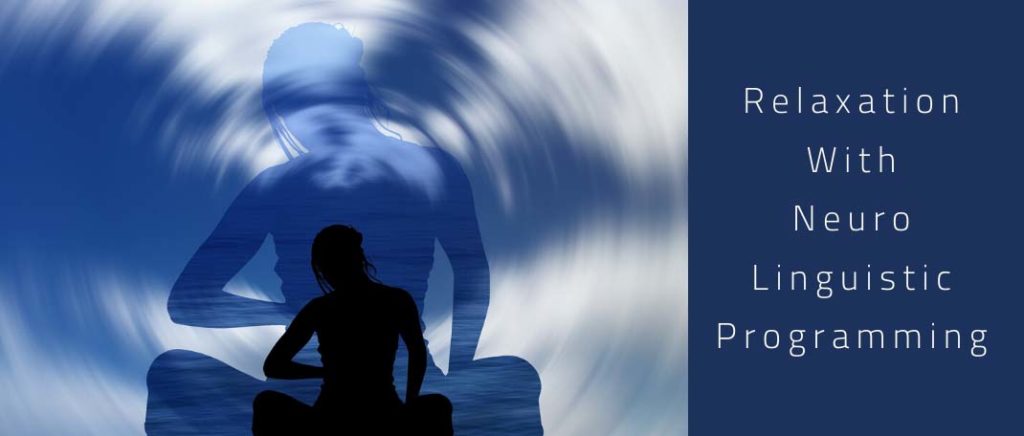
Relaxation With Neuro Linguistic Programming
Practitioners of Neuro Linguistic Programming (NLP) teach clients how to use the mind to relax the body and how to use the body to relax the mind. Various techniques include: anchoring resourceful states, changing unsuccessful strategies, shifting values and integrating conflicting parts of the unconscious mind.
Understanding the power of the mind, plus awareness of the mind/body connection is essential for achieving positive outcomes. To heighten the overall impact, five senses are utilized (sight, sound, taste, smell & touch) in NLP as well as language patterns that encourage change.
By being mindful of everything you do, you will have greater awareness around what bothers you, what increases your stress levels and what helps you relax. By noticing these changes, you can halt the natural stress response and bring your emotional levels back to a state of calm.
The most important thing in NLP is your mindset. Once you ‘believe’ you can change that, all your practice will support that belief making it a stronger response than either fear or stress.
Allowing your mind to give suggestions to your body and allowing your body to be suggestible is the key to success.
If you get good at being suggestible you will be able to tell your unconscious mind to do anything and it will do it for you. It acts like an obedient child that wants to please, and will do what you tell it.
However, you have to be careful what you tell it because if you are constantly saying I’m stressed, I’m tired or I’m bored, that’s what you will get more of – you may have heard the saying “be careful what you wish for,” this is why!
Some people hate goal setting and see it as a waste of time, but the action of physically writing down positive goals as well as looking at them and thinking about them, is a powerful combination and a great way to tell the unconscious mind exactly what you want and are striving for.
Have you ever noticed a sports person who blesses himself before the start of a race, or a golfer who presses one thumb on top of another before a big swing, maybe a footballer who bends down to tie his shoelace or a tennis player who taps her heel with the racquet?
These are all anchors that they have previously set up with their coach. This rehearsed action tells the brain it’s time to step into their desired state i.e.: focus, calm, confident, winner etc.…
Have you ever wondered why some people are very successful and great at what they do, yet others are merely competent? That’s the question Richard Bandler and John Grinder the creators of NLP, had in the 1970s.
One of the things they discovered was what we call modeling, in other words, copying the behaviour of those we admire and strive to be like. Using sport as an example again, I bet any athlete will tell you that they have watched hours of video footage of their heroes.
They will have slowed it down so they could see the exact execution of every bodily movement and how these movements flow together to produce the expected result. What’s this got to do with relaxation? Everything!
We can all choose to live a less stressful life by learning from someone who teaches relaxation techniques, or by copying the daily routine of a colleague or friend who always appears to be relaxed.
As mentioned before, there are numerous ways to control our thoughts and emotions. One way is linking them to colours, this is hugely effective and works by making use of the way the brain connects a visual stimulus to a thought.
Try This Exercise:
1. Pick a coloured sticker – blue (imagine ocean and sky) or green (imagine grass and gardens) are calming colours. Other colours have different associations, for example, yellow is seen as speeding the metabolism, therefore not so good for relaxation and red is the most emotionally charged colour, representative of love and danger!
2. Stick this coloured spot somewhere you will see it often, but not constantly.
3. Stare at the sticker and as you do so, think of a specific occasion when you
felt deeply relaxed (i.e.: lying by the pool on holiday, sitting on a comfy chair with a good book, being cuddled by someone who really cares for you etc..) Associate as closely as you can with this memory.
Take yourself back there; see what you saw and make that picture in your mind bright, vivid and colourful; feel what you felt (relaxed, calm, safe, loved, secure…) intensify this feeling as you continue to look at the coloured dot.
Hear what you heard in that moment (birds singing, soft music, loving words, comforting heartbeat…) turn up the volume on these sounds. Remember how totally relaxed you felt.
4. Do this for one minute, loading up the spot with this desired, relaxed emotion. From now on you will feel instantly relaxed whenever you look at this dot. Place these coloured spots around the house or office, as reminders to remain calm and relaxed.
We have always thought that people who talk to themselves are crazy, but I tell you that they are not!
Many studies show that language has a huge impact on our wellbeing, especially our self-talk, which is often more hurtful and negative than anything we would ever say to someone else! I mentioned earlier, the importance of being ‘suggestible’ and one of the great methods for this is through the use of language.
There are different types of language patterns that help us gain benefits. Commands are one of them; short, sharp instructions that the mind reacts to immediately, e.g: relax, listen, go and stop.
Embedded commands are where we surround these instructional words with other language. Such as putting the word ‘now’ at the end of each phrase is very powerful and causes the mind to react instantly e.g:
Luckily, you can RELAX now You might want to RELAX now I wouldn’t tell you to RELAX now if it wasn’t safe to do so When you RELAX now you will realize… You can RELAX right now |
You know that if you wanted to, you could tighten your muscles and make a fist that is so strong that you couldn’t make it any stronger or more powerful. Isn’t that true?
So, if you wanted to, and if you knew how to, you could also make any group of muscles absolutely, totally relaxed and that unless you removed the relaxation, you could relax those muscles to the point where they wouldn’t work.
That is also true, isn’t it? The easiest muscles in the entire body to relax are your eyelids. Now, you know that’s true, don’t you?
Remember a time when you were tired, had a rough day and closed your eyes and it just feels so good. Did you experience this as you were reading it? How’s that for suggestion! I was controlling your mind without even being in the room or speaking out loud!
NLP links with hypnosis and meditation, these promote altered states and have been used to help us relax, focus and increase well-being, since the beginning of civilization.
The main difference is that meditation is about acceptance and being open to whatever happens, whereas hypnosis is more directional – it’s about guiding towards something better.
An ideal position is to fully appreciate what you have and be open to moving towards something better, instead of always moving ‘away from’ things that make us uncomfortable.

ANNE MCKEOWN
Hypnotherapy Expert
Click here to work with me.
RETURN TO FRONT PAGE
|
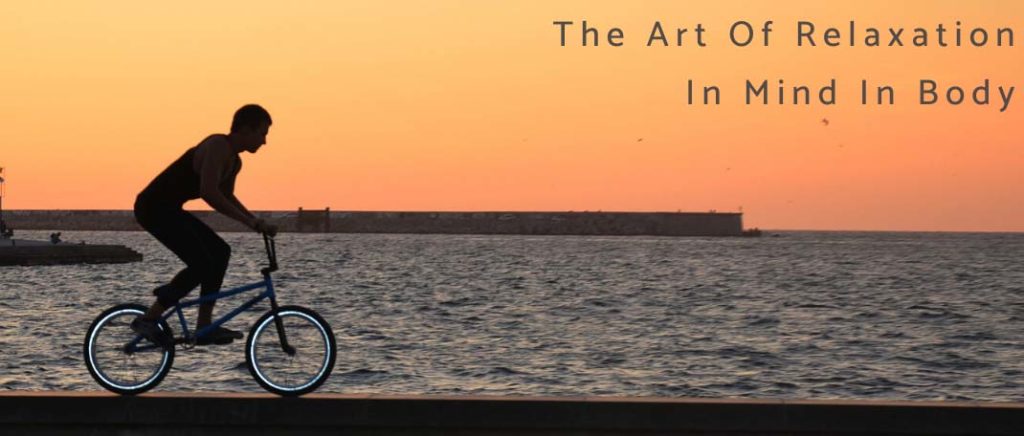
The Art Of Relaxation In Mind & Body
Did you know it’s impossible to be stressed and relaxed at the same time? An odd but interesting fact that many of us may never stop to think about. Yet relaxation is one of the most important key signatures of health.
If you were asked to describe what relaxation is or what it means to you, what would you say or do? Would you paint a picture, describe an activity, recall a memory, a vibration, a face, a place, a colour, image or shape?
Maybe just one word like sleep, music or meditation, a name, an environment or a feeling can capture the very quintessence of how you relate to and enjoy the experience of relaxation.
Perhaps it’s a multi-sensory event or a carefully ordered sequence of several things that creates your relaxation habit.
Like many things, relaxation is subjective. It means different things to different people at different times for different reasons.
Everyone is different and as individuals our perceptions, values and belief systems are as unique as our parallax of vision, our fingerprints or our DNA – or at least this is what we are subconsciously programmed to think.
When we begin to explore the symbiosis of the mind and body, we find that despite our apparent individuality we are all genetically and bio-chemically very alike. In fact, we are literally identical.
When we peel back the uniqueness of our personalities we find the same atomic infrastructure of cells, chemicals, relationships, vibrations and processes that are the Universal building blocks of being human.
When you stop and think about this, our commonality is infinite.
Movement, respiration, speech, thinking, eating, smiling, crying, kissing, hydrating, how we feel elation, pain or anxiety, our emotional sensitivities or the butterflies of love are all examples of how we share common cellular and sub-cellular processes.
It’s the entire library of our cellular processes which combine miraculously to create the neurological bio-chemical experience we call life.
In simple terms, our thoughts are the drivers, catalysts and change agents that shape, direct and support the outcomes of our neural chemistry and bio-physiology.
What we think, how we think and how we relate to our thoughts are some of the keys that switch us between our conscious and subconscious processes – between our conscious and subconscious selves.
When we experience anything new for the first time we consciously pay attention to what we’re learning so that with repetition we can remember what to do in a moment and fine-tune our skill or our enjoyment of something.
Once we’ve practised a few times and retained our new sensory and chemical knowledge, we begin to behave more and more without conscious effort, as the footprint of what we’ve learned is hard-wired into the subconscious memory of our cells.
This is how we learn everything. This is how we can learn to relax.
Imagine for a moment what it was like learning to ride a bicycle. To begin, we’d balance on the seat while holding the handle bars.
As we perfected this consciously, we’d move on to the next phase of learning which might have been pedalling while seated and holding on to the handle bars.
Subconsciously, we can now sit on the bike and hold the handle bars, however when we move the pedals we think consciously about this range of movement and how we relate to it in the moment of new multi-sensory experience as well as how we update the subconscious process that started by sitting on the seat and holding the handle bars which now extends to using the pedals.
With each progression, we key switch automatically between our subconscious and conscious states until we master the art of cycling and it becomes a well-rehearsed subconscious habit.
The human mind-body has infinite capacity to learn. Our health and wellbeing is literally dependent upon the energy we bring to our individual and collective experiences.
Back to learning to ride the bicycle for a moment, thinking negatively about actually falling off the bike produces stress responses inside the mind and body.
Chances are by repeating the thought of falling means that at some point this is what will almost inevitably happen, unless we change the story we’re telling our cells by changing the energy of our thought processes.
Typically, stress responses can extend the length of time that it takes to learn, it can make learning unenjoyable and in some cases impossible.
Prolonged stress can result in blocked energy, it can suppress the immune system and prevent the mind and body performing optimally if left untreated.
Triggering a stress response repeatedly will become a negative habit, inhibit development and simply causes more and more distress as it fast becomes negatively self-fulfilling.
Relaxation, on the other hand, is a self-empowering key for breaking negative thought spirals.
Unlike stress, relaxation allows us to experience healthier outcomes like a decrease in heart rate, blood pressure, and muscle tension, it boosts our immune system, improves sleep patterns, alleviates stress, and elevates mood and optimism, all of which helps to reduce the effects of anxiety and depression.
This results in better self-care and improved health.
In the medical world, when the mind and body co-create the right cellular conditions to cultivate, regulate and energise a state of optimal performance, this is called ‘homeostasis’.
In our Universe of super-conscious expression, the key that switches us into the landscape of human-intelligent homeostasis begins with conscious relaxation. With repetition of conscious relaxation techniques, it is possible to re-programme our subconscious relaxation response so that it can be triggered ‘on demand’ to negate stress and promote health and wellbeing.
Remembering that it’s impossible to be stressed and relaxed at the same time, relaxation begins to feel like a really smart choice because it creates health inside the mind-body and simultaneously suppresses negative neural connectivity in our cells.
Like most things, relaxation is something that all of us can learn and benefit from. Our awareness of key switching between states can help to refocus thoughts and this can change the way we look at ourselves, each other, at life and perhaps society as a whole.
Being aware of our shared ability to reprogramme our subconscious cells is a great start. Learning to actively key switch to trigger our relaxation response will elevate the energy vibration of our integrated network of Chakras.
Applying different relaxation keys found in activities such as meditation, yoga, active imagery, Tai Chi or co-creative imagery can become part of a beautiful journey into super-conscious expression where we each learn to become the empowered master of our conscious and subconscious programming.
Key switching is a transformational tool that begins to unlock the potential of human capability beyond that which was previously thought possible.
As a writer, Light Worker and Reiki Master, it’s important for my mind-body energy to be relaxed when I work. I use a simple but powerful Chakra relaxation technique which helps to keep my energy meridians balanced and open so that energies flow unconditionally to wherever they are needed.
I use different variations of this technique in healing sessions to activate, regenerate and accelerate relaxation synthesis between Chakra meridians and the cellular processes they support.
I think of relaxation as the moment when the energies of my inner and outer Universe fuse seamlessly to create the opportunity for co-creative healing, transformation and regenesis.
The sensory feeling of relaxation is probably a unique experience for all of us and our common neural chemistry and molecular processes bring us much closer together as humans than we might think.
Poignantly, relaxation is a positive and healthy state of mind-body harmony that all human beings can learn, switch on and master. Once relaxation is switched on, it becomes a karmic key with the potential to liberate and transform lives everywhere.
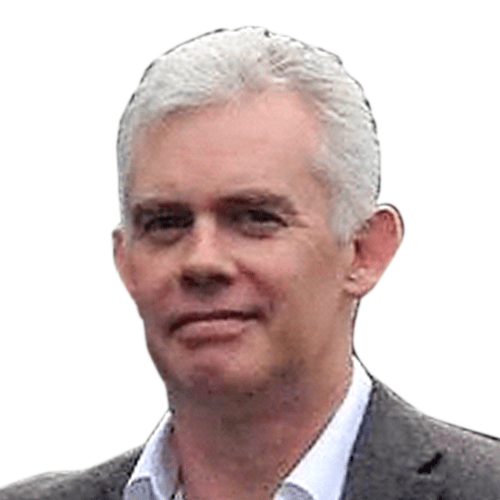
Author, Dreams Rainbows and Butterflies
Click here to to find a practitioner.
RETURN TO FRONT PAGE
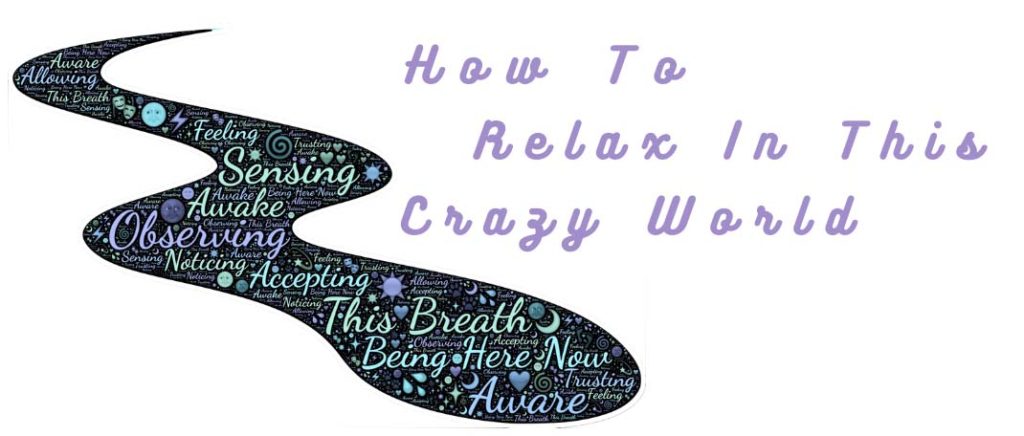
How To Relax In This Crazy World
Coming back to our senses on stressful, hectic, busy days often requires conscious effort. As with everything else we want to install our inner hard-drive, training is a good way to anchor relaxation and awareness techniques into our system.
Best-case scenario: we have learned relaxation tools early on in our lives, and are remembering to use them on a regular basis at present. Worst-case scenario: we don’t remember anything in a stressful situation.
How to consciously relax in such a moment? Keeping it simple is one of the greatest tools I have ever ‘learned’ – a.k.a I have unlearned to be complicated. What can we focus on at any time, no matter what situation we are in? Our breath.
While reading this, focus on your breath for a minute – what do you notice? Have you just taken a deep breath, remembering to consciously breathe? (I did!)
We take our body and its amazing way of functioning for granted so much, we move our extremities automatically. We hold our body automatically, not consciously keeping the spine straight, or putting one foot in front of the other in a focused way.
We automatically breathe – often times these are shallow breaths we take, rather than inhaling deeply to fill our lungs with precious oxygen. We eat and drink automatically, healthy stuff or not-so-healthy stuff.
The list goes on and on. We are so used to our body doing its work that we forget how much better we could serve it with our awareness, and how big the rewards can be in return.
Many people tend to hold their breath when in a stressful situation, and only when the body needs air they breathe out on autopilot before starting to breathe ‘normally’ (= shallow) again.
Depending on the situation, the monkey-mind might get really loud also, making it seemingly impossible to relax at all. This deep-breathing thing might need some time to do the trick, and it is so worth practising it.
To calm the mind, we can vary our breathing – we can breathe in through the nose, and out through the mouth, blowing the air out audibly.
By giving our monkey-mind something to do, it can concentrate on directing the breath, rather than hopping about thinking a gazillion thoughts in five seconds. When we are in sync with brain and body, we usually calm down automatically, and fast.
Once the monkey-mind has mastered the nose-mouth-technique and starts galloping again, we can change our breathing. Breathing in through only one nostril, closing the other one with one finger.
And breathing out through the mouth. Focusing on the in-breath ONLY going in through one nostril occupies the mind… Swapping nostrils can further help focusing on just breathing.
And after having breathed in through both nostrils singularly, we can focus on the in-breath coming through both nostrils again. Sounds complicated? Try it out, and have some fun with it!
Another tool we can use for relaxation no matter where we are or what situation we are in is to chant a word or a sentence. It can be a mantra, it can be any word, or it can be just one letter.
In my work with children, I call this their personal magic spell that will help them to calm down fast. The simpler the phrase/word, the more effective, as repetition might tire the mind, and it might simply switch off – which means we can relax.
Maybe you already work with affirmations and mantras, or you have done in the past and simply forgotten about it. Re-examine the words and phrases you have used, and see if they still work for you.
Or find new magic spell that helps you to come back to calm. Sometimes, a heartfelt ‘fuck,’ (repeat as often as necessary!) does the trick, and sometimes a phrase like ‘I am calm, so calm’ eases our stress levels.
There are so many ways on the path to relaxation, and the above-mentioned are two that I can recommend from my own experience. Since I found my magic spell thirteen years ago, the monkey mind switches off immediately when I am in bed and I say it in my mind.
My whole system has learned to follow that magic spell, as I have taught my body-mind system that when I use that phrase, I mean that I want to go to sleep. And it works every time.
Once you’ve tried out the breathing techniques, and the chanting/affirmations – why not combine them? Our mind wants to be productive and learn things.
The whole system benefits from this curiosity and thirst of knowledge; and what’s better than teaching ourselves good stuff that might even help the people around us, with us being in a regular state of conscious relaxation?
Wishing you lots of fun with finding your personal magic spell and practising it!

Conscious Awareness Teacher
Click here to to find a practitioner.
RETURN TO FRONT PAGE

Finding USAWA On Mt Kilimanjaro
| Life is like climbing a mountain; you’ll get there safe and well by going at your own pace, overcoming fear and being mindful – usawa! |
Usawa. What is this unusual word? It means balance in Swahili, the language spoken in beautiful Tanzania. I first discovered the mystic of “usawa” when I decided to climb Mt Kilimanjaro in August of 2010. I was 34, single, disillusioned with the medical system and highly stressed with work.
I needed answers and a new direction in life, a direction that felt real to me.
Mt. Kilimanjaro is the highest mountain in Africa, it rises above us at 5895 metres! I remember it standing majestically before me, rising deep into the clouds.
I was not an athlete, and had never climbed a mountain in my life, least of all one which literally touched the sky. So, what was I thinking?
This is what brings me here today, I want to share with all of you a few life lessons I learnt from that mountain. I carry them with me to this day, and they are:
• Steps to overcoming fear • The necessity of mindfulness in our daily lives • The myth that all goal seeking undoubtedly brings happiness |
I remember sitting on the flight into Tanzania. I was on my own, with mixed feelings of excitement and nerves. I looked out of the window and realised the enormity of my decision. Had 12 months of training with a personal trainer been enough?
Was it true that it’s more about your mental strength than physical? Would I have enough of both? Frazzled, I cast my mind back to Matthew Syed’s book, Chance. In it, he analysed the theory that sport stars are not born, but are made.
I decided to use the technique he wrote all winning athletes use before running a race – visualisation. I knew Syed was right, but I was still a little scared and I couldn’t work out why.
What Exactly Is Fear & Why Do We Need It For Our Survival?
In life, we make decisions based on fear or love.
Fear is not knowing what the future holds. Fear makes us prepare for an upcoming test so we avoid failure, take notice when crossing the road so to avoid death, and it especially makes us train like crazy so we don’t fall sick on a mountain on our own.
Anxiety is literally fear that arises due to our thoughts jumping to the worst-case scenario. The Resilience Factor by Karin Reivich explains this beautifully and recommends an exercise which has been extremely useful for my own patients.
We naturally jump to the worst-case scenario – we tend to be programmed that way for the sake of our survival, and that’s ok.
Though, what can be incredibly hindering, is living as though the worst-case scenario is about to happen and in effect constantly living with that anxiety and fear.
Reivich explains how we can practise retraining our thinking habits by writing down our worst-case scenario, followed by the probability of that happening, then the best-case scenario, the most likely scenario and lastly, the solution to the most likely.
Then gradually, with time, our minds can switch to the most likely, rather than hanging around with the tempting and dangerous worst-case crowd.
How Do We Overcome The Unknown?
We need to work hard to familiarise our thoughts with what the future could bring us.
In my case, I researched the entire walk. I spoke to friends who were successful in making the climb; I took detailed notes about every step of the way and listened attentively to any advice they could offer.
On that 10 hour plane ride, I visualised myself climbing to the top, taking one step at a time, smiling, feeling amazing, enjoying the views, laughing. I think I must’ve gone through the story in my mind at least 100 times.
I wanted to test out Syed’s theory, and believe me – it made such a difference in my not wanting to get straight back on another 10 hour flight home!
The Climb
I remember meeting our guide for the first time. A young Tanzanian who looked incredibly confident, smartly dressed in a white t-shirt and blue shorts. “I’ve been up the mountain 400 times” he said “I will get you all up to the top.”
Though his most valuable piece of advice was – “go slow, like a snail. That’s what the mountain makes you do.” The secret to overcoming or battling the dreaded altitude sickness was to go slow, as our bodies needed to acclimatise to having less oxygen.
Mountain climbing or trekking always reminds me of mindfulness meditation; the art of decluttering the mind and being focused on one task at a time.
It takes practice, and I mean days, weeks and years of this kind of meditation to successfully be able to train the mind into slowing down. Where I was, I had no choice but to be in the present – to be completely and utterly mindful.
The mountains force you to do it. You can’t possibly think of anything else otherwise you’d lose your footing and slip and fall. One step, one foot in front of the other, will eventually lead me to my destination.
The last 1600 metres were the worst. We reached 4200m and my head began pounding, I couldn’t even eat. The last mornings’ trek was in pitch black darkness, I had to stop and catch my breath every 15 minutes as the air thinned.
One of our teammates was far worse, vomiting as often as I stopped for breath. I remember thinking to myself “am I going to die here?” Irrational, I know, but I was scared, and I couldn’t help but jump to the old ‘worst case scenario’.
Nevertheless, we kept going, out of sheer will, and eventually we did it! 5895 metres. Tears were streaming down my cheeks. I couldn’t believe I’d actually made it.
But then, before I knew it, and just 5 minutes later, we were instructed to head down. That was it, you can’t spend too long with such little oxygen.
To Set Goals, Or To Not Set Goals?
That goal, the one I’d been wishing, willing, visualising and training so hard for, had literally lasted 10 minutes. Any longer and I would’ve suffocated myself with my own wanting. It got me thinking – why?
What exactly are we trying to achieve or experience from all of this goal setting? Do we feel that the sense of achievement reflects self-worth? What is the purpose of it if, when we reach our goals, the sensation lasts just minutes before we are thinking of our next adventure?
But I realised that when reflecting on my time in Tanzania, my thoughts floated to all the wonderful moments that came from the journey, and (excuse the play on words), the climb.
I reflected on the lessons that I had learnt from the entirety of the past 6 days, not in the 10 minutes at the top – because that was where the real accomplishment was, on that mountain and in life. It’s all about what we learn. And how often now do you think I think about actually being on the top? Rarely! It was an added bonus to the story, a nice ending note.
So, it’s my opinion that goals are just guides. They can and will change, so it helps to try and see them in such a way. Your journey has been uniquely enriched with life skills which have made you into the person you are today, they’re invaluable achievements.
Now when I next think of chasing another goal to make myself feel happy, I think about what I am experiencing right now instead – the joy that I have right this moment, and I focus on being fully present.
The goals are my side projects – fun ideas that constantly require revisions, awareness, and compassion.

Integrative General Practitioner
Click here to to find a practitioner.
RETURN TO FRONT PAGE
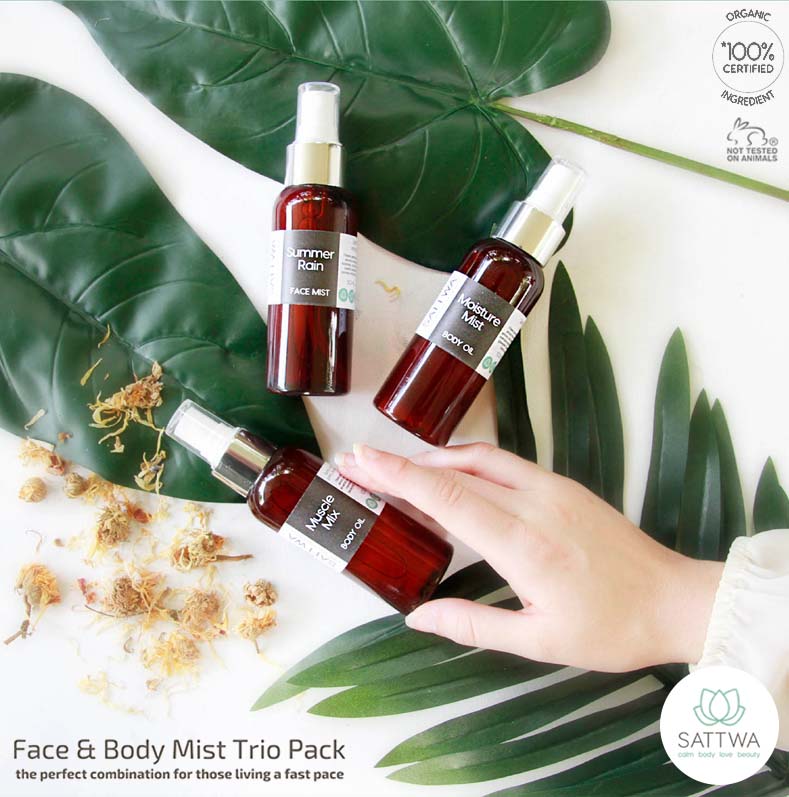 Rejuvenation Pack · LOVINGLY MADE IN AUSTRALIA · |
| Mind Relaxation Techniques – Frequently Asked Questions | ||||||||||
|
Wordseach Puzzle[game-wordsearch id=”52160″ ] |
NEED MORE CUSTOMERS OR CLIENTS? ADVERTISE in this magazine. |
Have You Seen These Features • The Holistic Healing Portal  |







